By Louise Irvine
In celebration of Earth Day 2021, we are highlighting the four classical elements of EARTH, AIR, FIRE, and WATER that ancient philosophers believed were the fundamental building blocks of nature. They used them to explain the phenomena of the natural world and the complexity of all matter in terms of simpler substances. See how the artists represented at WMODA are breathing life into glass by using natural resources from the EARTH to create beautiful decorative objects. For thousands of years, FIRE and AIR have been harnessed in furnaces to create glass art. Dive into WMODA to see our latest exhibition inspired by all the wonders of the deep found under the WATER in Florida.
Genius in Glass
Glass is one of the world's oldest materials created by humans and it has been used to make art for millennia. The ancient Egyptians made colored glass beads for jewelry and the Romans developed hollow molded glass vessels. Glass blowing was first practiced in the 1st century BC and modern masters of studio glass, such as Dale Chihuly, remain in awe of the process. Chihuly blew his first glass bubble in 1965 and the magic has stayed with him ever since.
Earth & Fire
Legend has it that shipwrecked Mediterranean sailors accidentally created glass from sand and some blocks of soda which melted in a beach bonfire thousands of years ago. The earth provides the raw materials for glass, which is made from sand (silica) heated to intense temperatures. Nature sometimes produces its own glass when a sandy beach is struck by lightning. In glassmaking, soda ash (sodium carbonate) is added to the mix to reduce the sand’s melting point and limestone (calcium carbonate) is included for durability. Waste glass, known as cullet, can be recycled in the mix to save energy and reduce raw materials.
Ordinary soda-lime glass appears colorless, but metals and metal oxides can be added to create color and enhance its aesthetic appeal. For instance, manganese is one of the oldest glass additives and has been used since Egyptian times to create purple amethyst glass.
Paul Stankard, the American master of flameworking, uses rods of different colored glass manipulated with a gas oxygen bench torch to make his complex floral clusters. He encapsulates his miniature gardens in molten glass, which is then cooled, cut, and polished to form paperweights, orbs, and other sculptural forms. Some of his sculptures represent life above and below the earth as can be seen in his Art of the Flame exhibit at WMODA. In the top half of his paperweights are flowers, leaves, and hovering insects. Underneath are complex root systems in the earth and mystical little root figures. Paul’s earth people, inspired by illustrations in Medieval herbals, are benign inhabitants of an unseen world encapsulated in glass.
In the WMODA shop, Emanuel Toffolo’s incredible flame-worked beetles from Venice are so realistic that our visitors have difficulty distinguishing his glass art from real specimens. With his painstaking precision, Toffolo has captured the natural iridescence of beetles so brilliantly in glass that they become the jewels of the insect world.
Fire & Air
Glass can be blown by gathering a gob of molten glass around an open metal pipe and slowly rotating it. Blowing air through the pipe creates a bubble in the glass, which can be grown into a balloon. By skillful blowing and turning, all kinds of amazing shapes can be produced. You will be blown away at WMODA to see all the spectacular art forms created by human breath and a bubble of glass.
Chihuly’s Macchia are among the largest forms made of blown glass on display in the museum’s Art on Fire exhibit, alongside the monumental vessels by the late Stephen Rolfe Powell. He was intrigued by irregular shapes in nature, which are swollen or puffed such as fruits and vegetables. Color also stimulated him, particularly the brilliant sunrises and sunsets at his beloved Kentucky home.
Rob Stern conveys the power of the wind in his Constellations exhibit at WMODA. Rob is fascinated by cosmic phenomena and he constructs his Windstars with 13 individual parts, which he blows with infinite color and cane patterning variations. Birds have the element of air as their domain and Rob has studied them closely for his series of birds in flight and perched on branches. His brilliant interpretations of nature continue in his giant leaves, seedpods, and conch shells as well as different species of endangered corals.
Water & Air
Chihuly was drawn instinctively to the luminous qualities of glass, and he talks of finding sea glass on the beach as a child. Sea glass is formed by decades of sand and wave erosion on glass containers that have been tossed into the ocean. The colors of these beach gems vary according to the typical glass trash of the location – brown and green are most common in Florida. Nature has turned trash into treasure by creating these diamonds of the beach. Unfortunately, this process does not work for today’s plastics!
Chihuly is inspired by nature in all its forms but he is particularly attuned to water and the ebb and flow of the tides in the Pacific Northwest where he grew up. His Seaforms are often reminiscent of the radial patterns on shells and sea urchins while some of the undulating forms suggest translucent jellyfish with floating tendrils. However, his work mainly conjures up associations with water and marine life without replicating them.
Chihuly’s collaborations with the late Murano glass sculptor, Pino Signoretto, resulted in more realistic creatures from the Venetian lagoon as can be seen at WMODA. Our “Sea of Glass” is also awash with weird underwater critters including mollusks and crustaceans, thanks to Dario Frare from Murano. He specializes in traditional Venetian flameworking and combines torch work with blowing, tool shaping and dexterous hand movements.
Josh Fradis blows bubbles of glass to make his Coral Caverns inspired by the natural shapes, textures, and colors found in Florida’s ocean reefs. Creating the caverns is an exciting process as Josh forces the molten hot glass into thermal shock by dipping it into cold water. This produces the deep fissures which expose the brilliant interior colors. Josh’s vivid interpretations of coral formations draw attention to our critically endangered reefs, which are dying of disease and global warming. Josh is also making waves at WMODA with his majestic glass sculptures. His surging waves with crests of seafoam are made in five sizes and three colors variations inspired by the Hawaii, Caribbean, and Pacific Californian oceans.
Glass is truly an extraordinary material. It is made from opaque sand, yet it is transparent. It behaves like a solid material, but it is also a sort of liquid. See its versatility as an art form in all the glass-making techniques represented at WMODA, which includes lampworking, glass fusing, glass pressing, and hot glass blowing.
Read more about the Earth • Air • Fire • Water event @ WMODA
Read more about glass artists and nature at WMODA
Paul Stankard The Art of the Flame
Watch Josh Fradis make bubbles of glass so large that they burst.
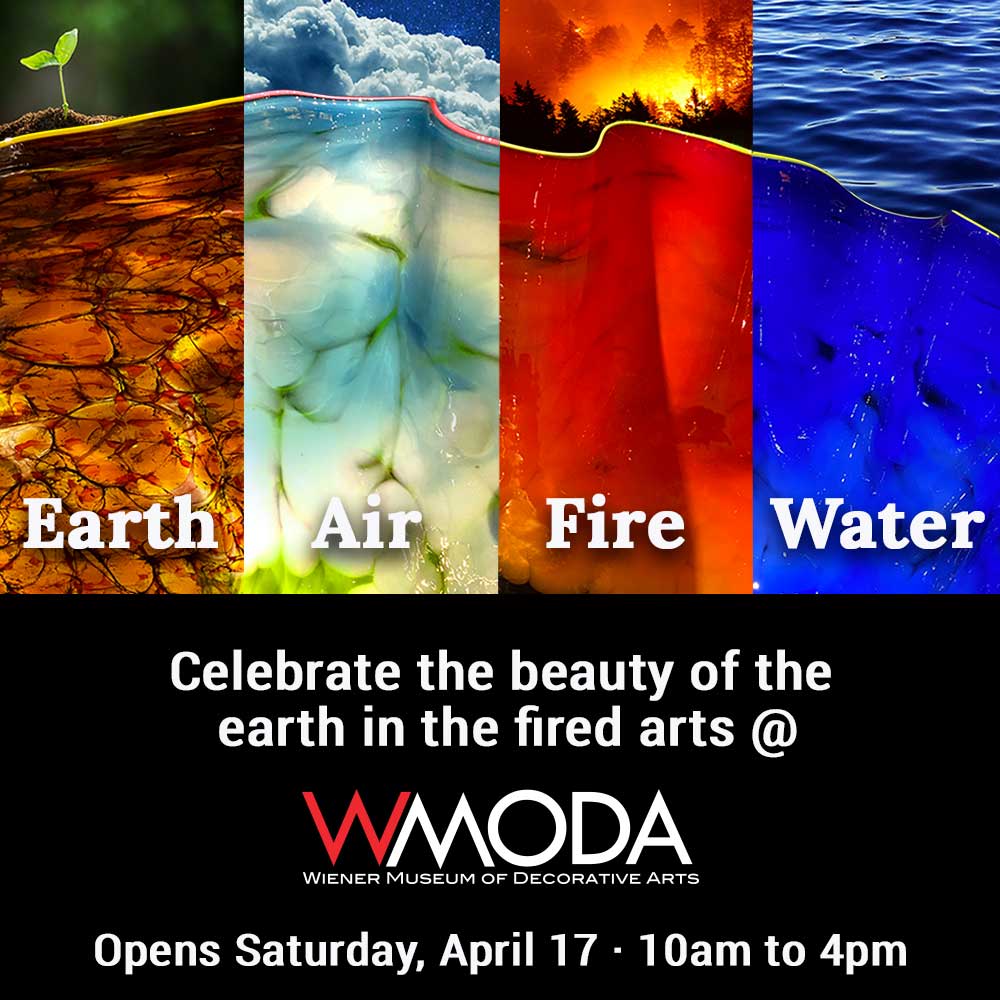
Earth • Air • Fire • Water

Dale Chihuly Macchia detail

Dale Chihuly Macchia detail
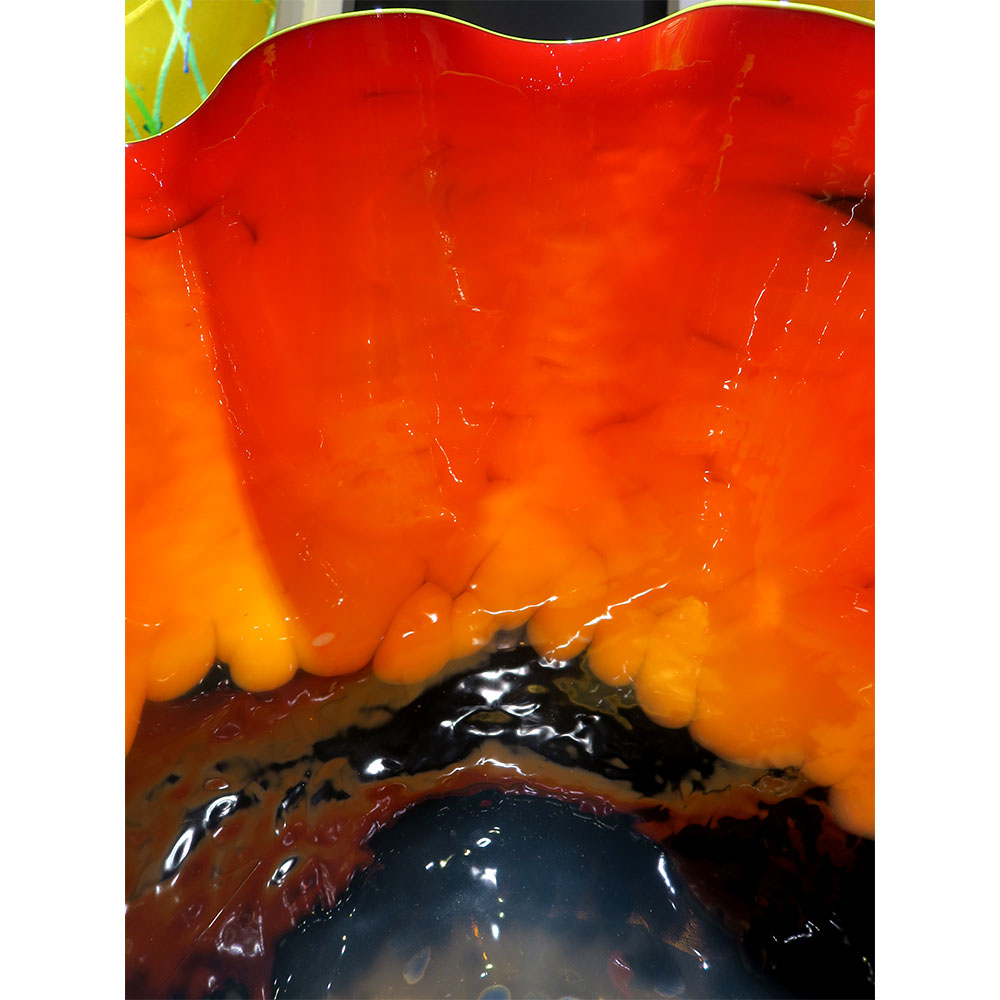
Dale Chihuly Macchia detail

Dale Chihuly Macchia detail

Dale Chihuly Macchia detail

Dale Chihuly Macchia detail
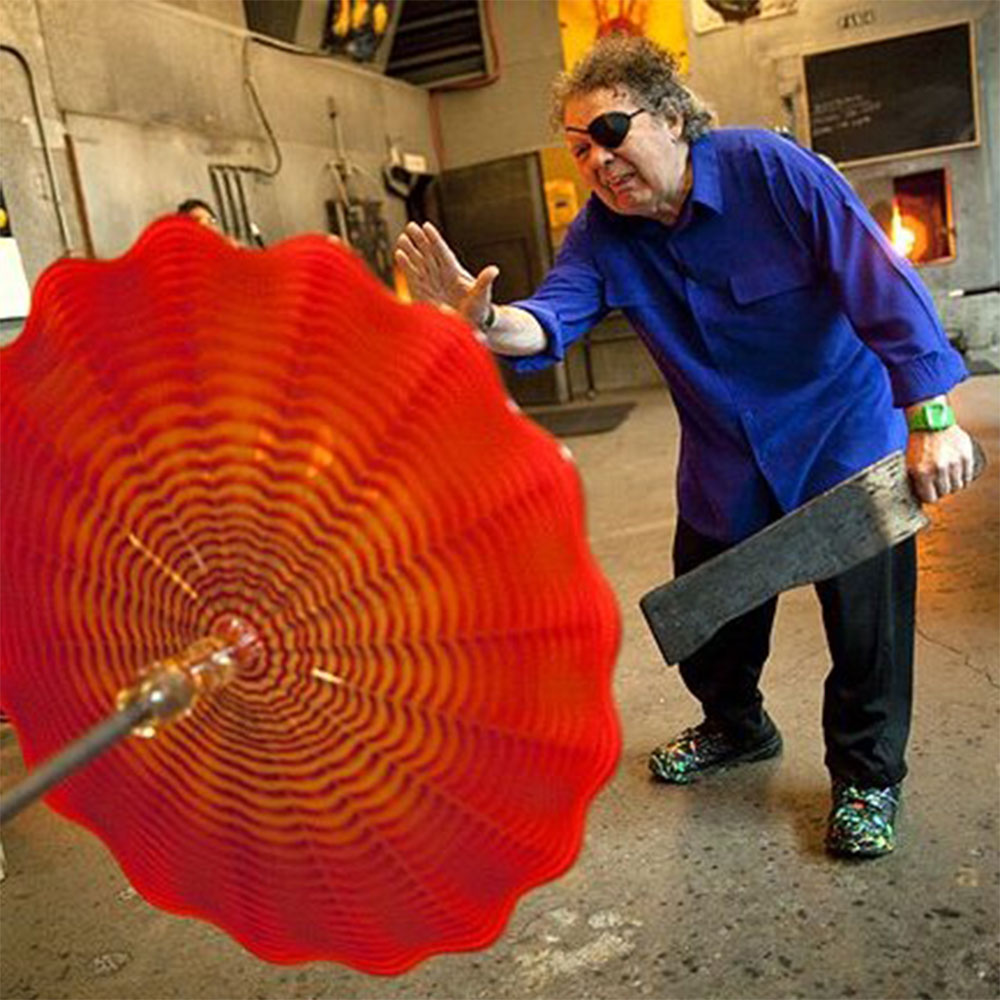
Chihuly team blowing a glass Persian
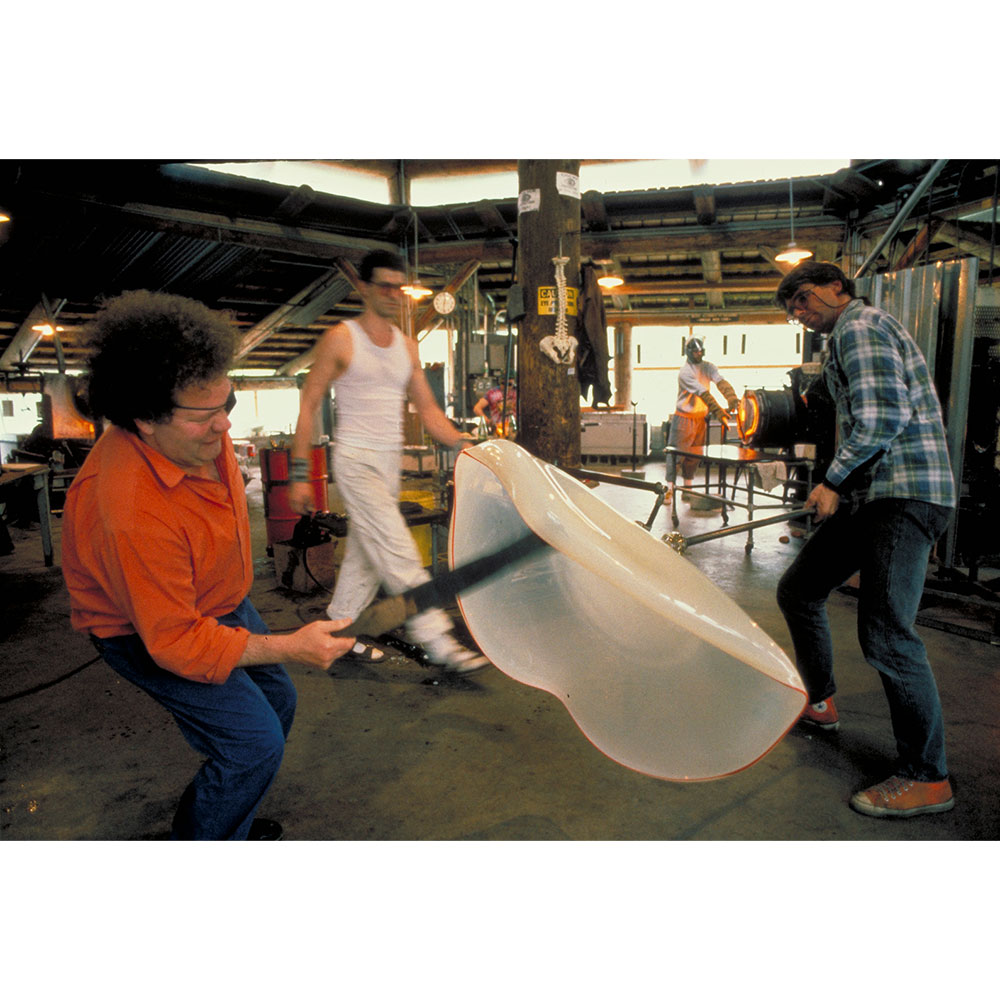
Chihuly team blowing glass
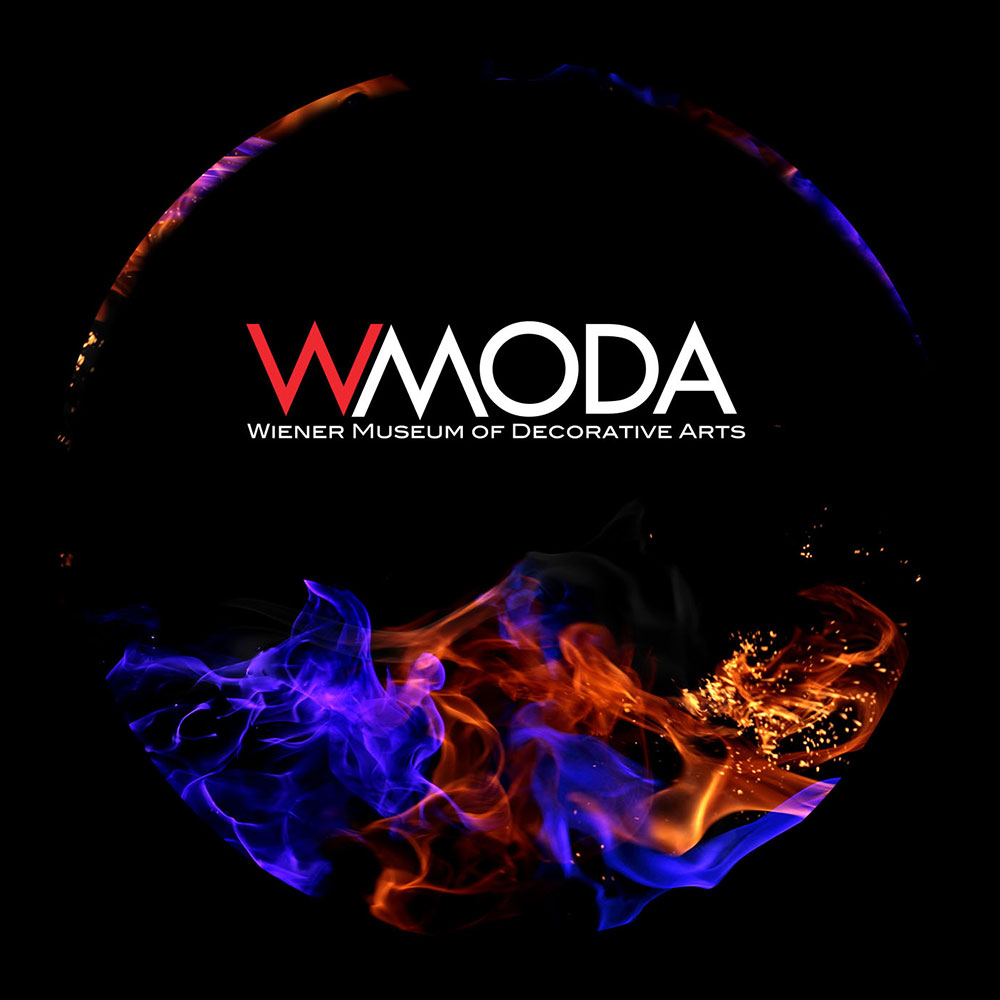
“One can only wonder what kind of genius thought of blowing human breath down a metal tube, forming a bubble inside a molten blob of glass. And to think that this molten blob of glass is made only of silica or sand, the most common material in the world, that can be transformed from a solid to a liquid to a solid just from fire. For me, it’s the most mysterious and magical of all the inventions or materials that mankind has invented or discovered.” Chihuly
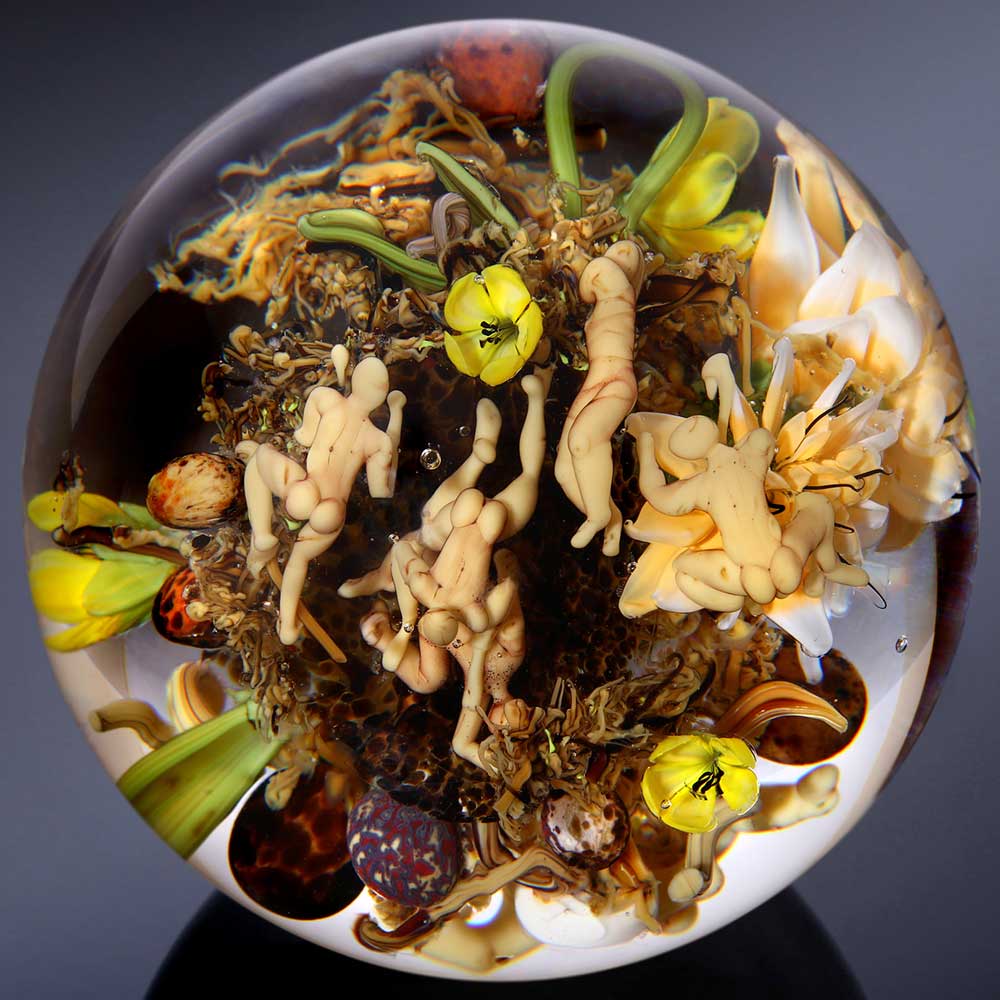
Paul Stankard
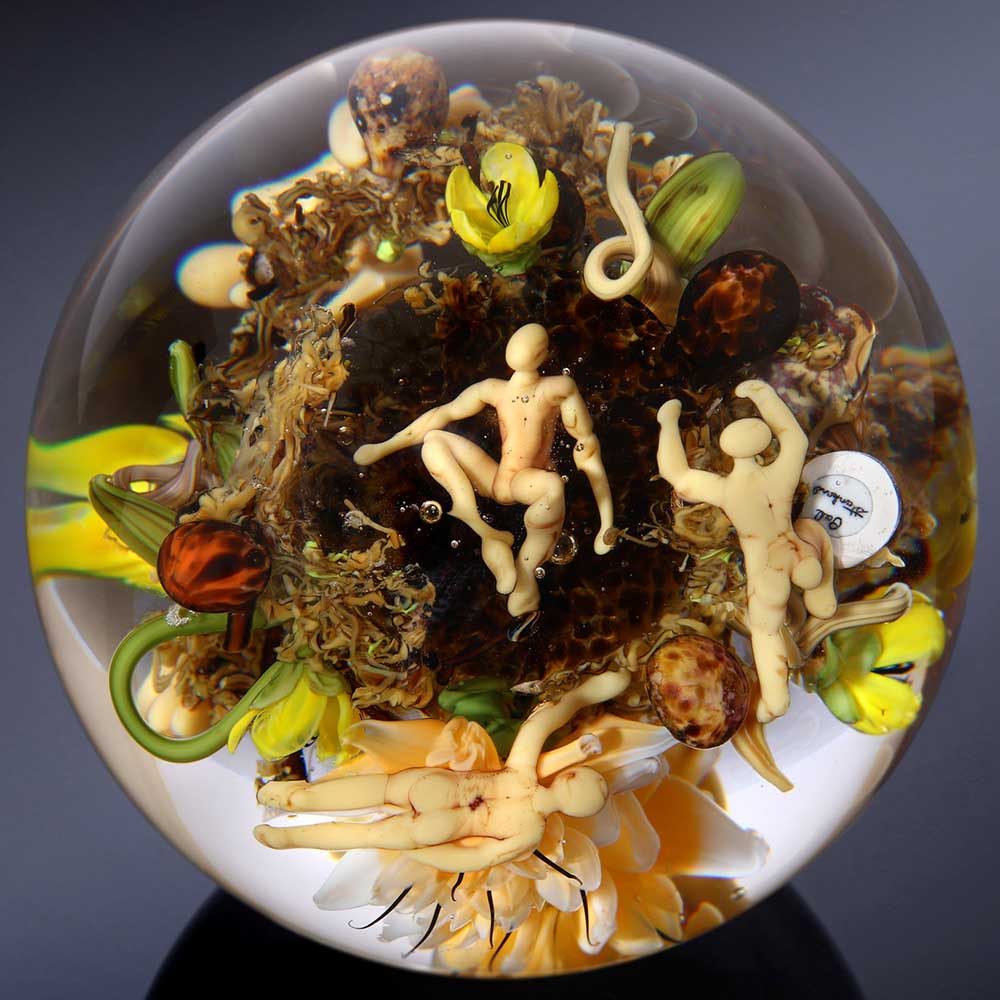
Paul Stankard
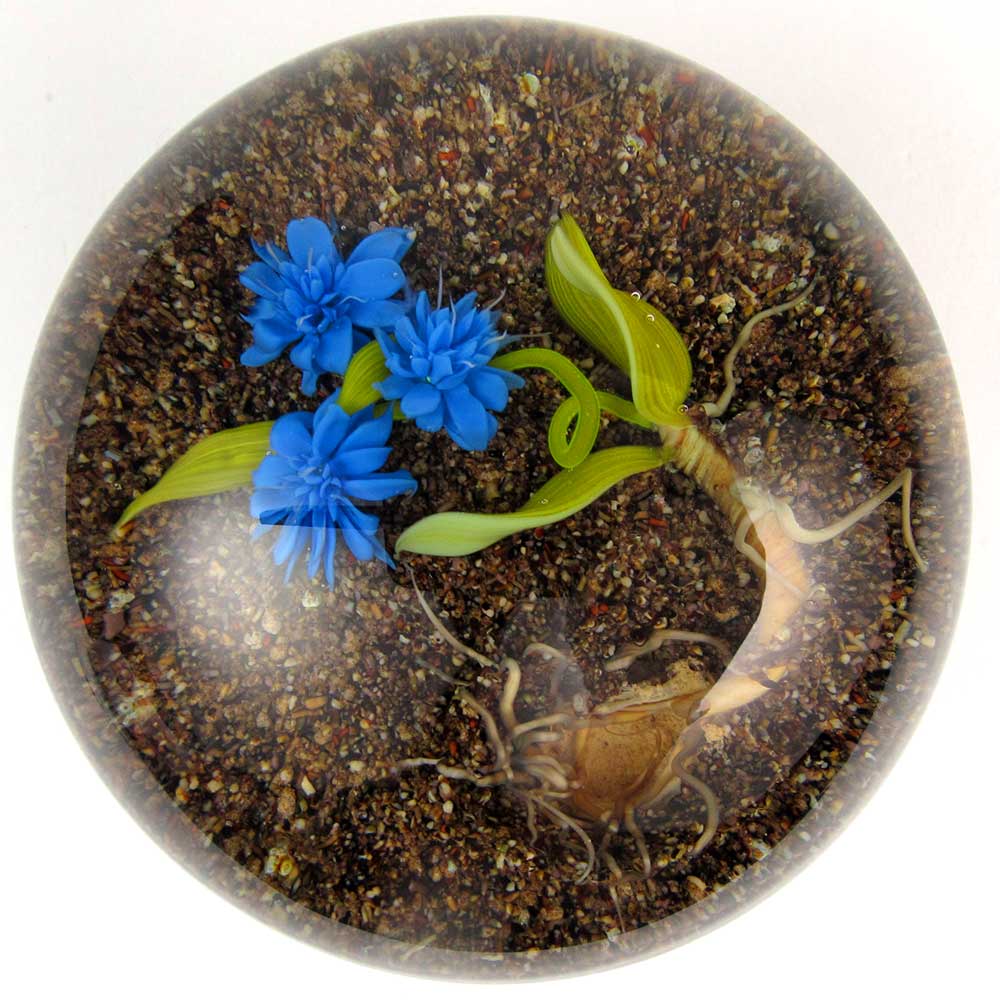
Paul Stankard
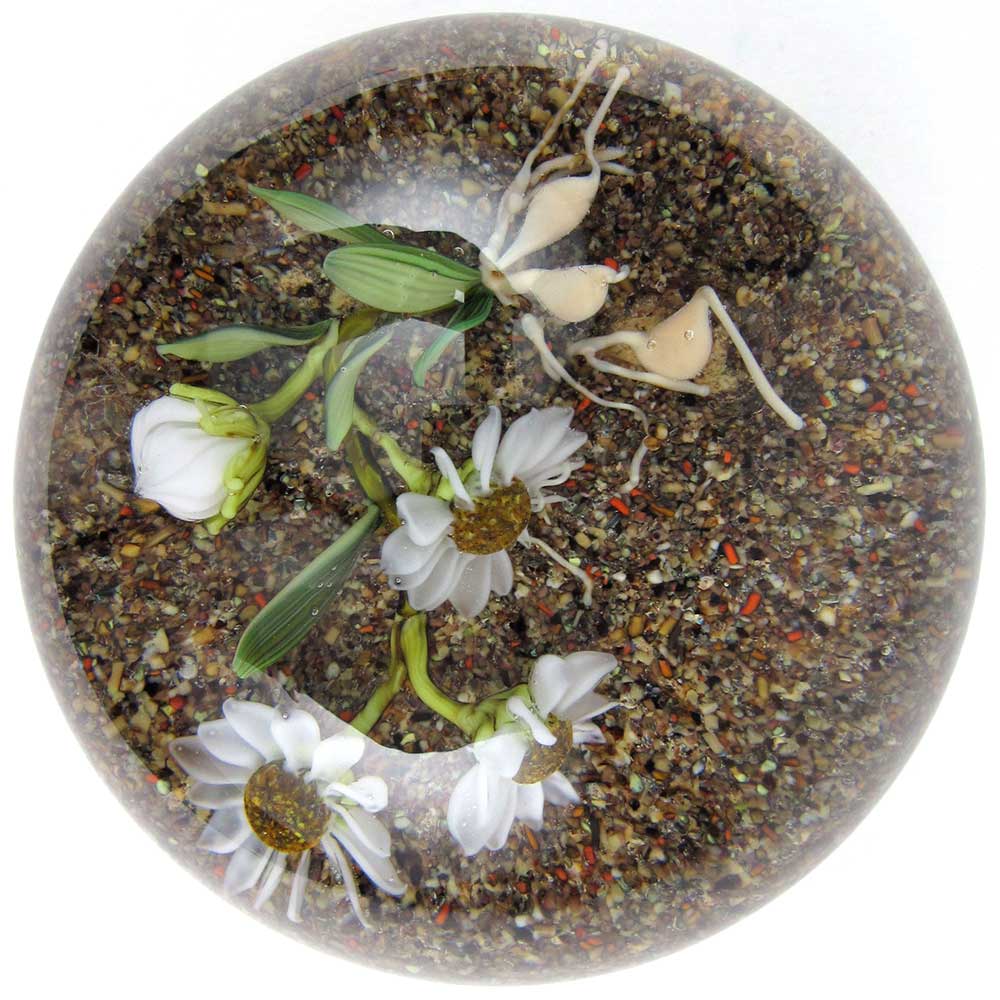
Paul Stankard
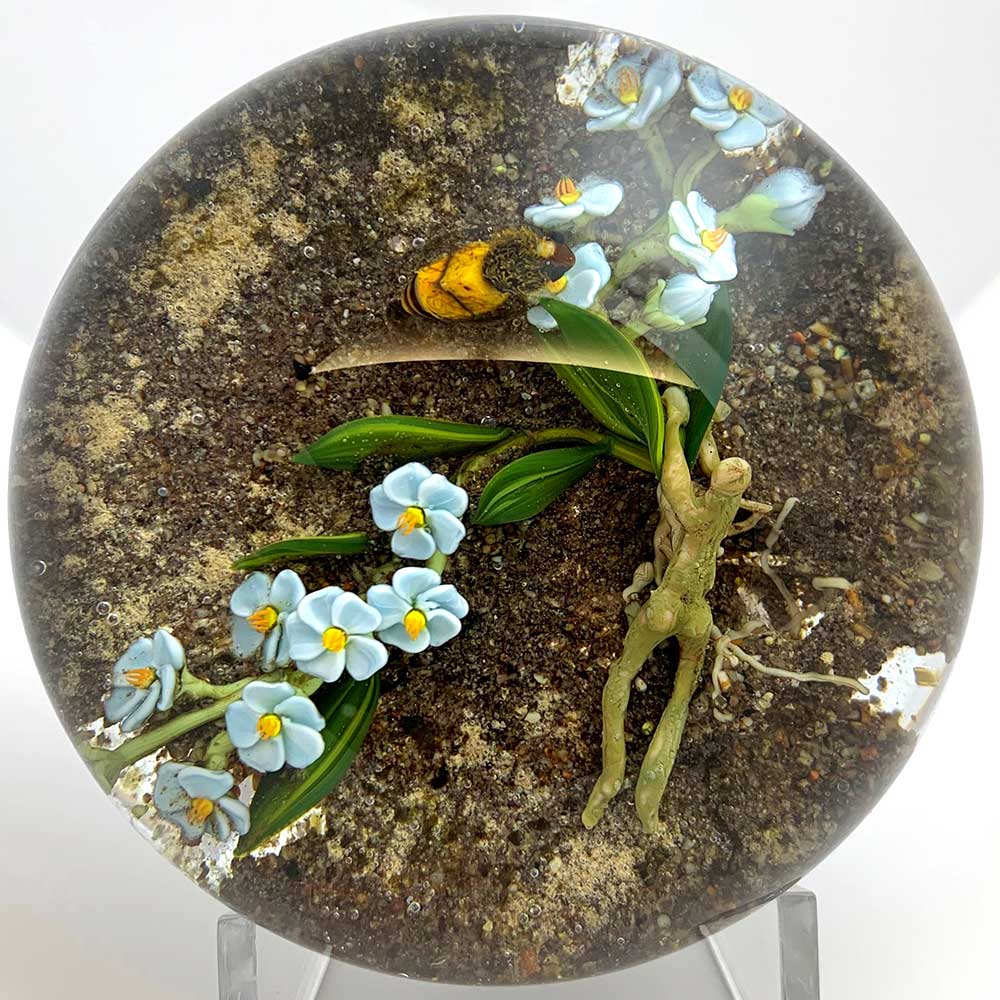
Paul Stankard
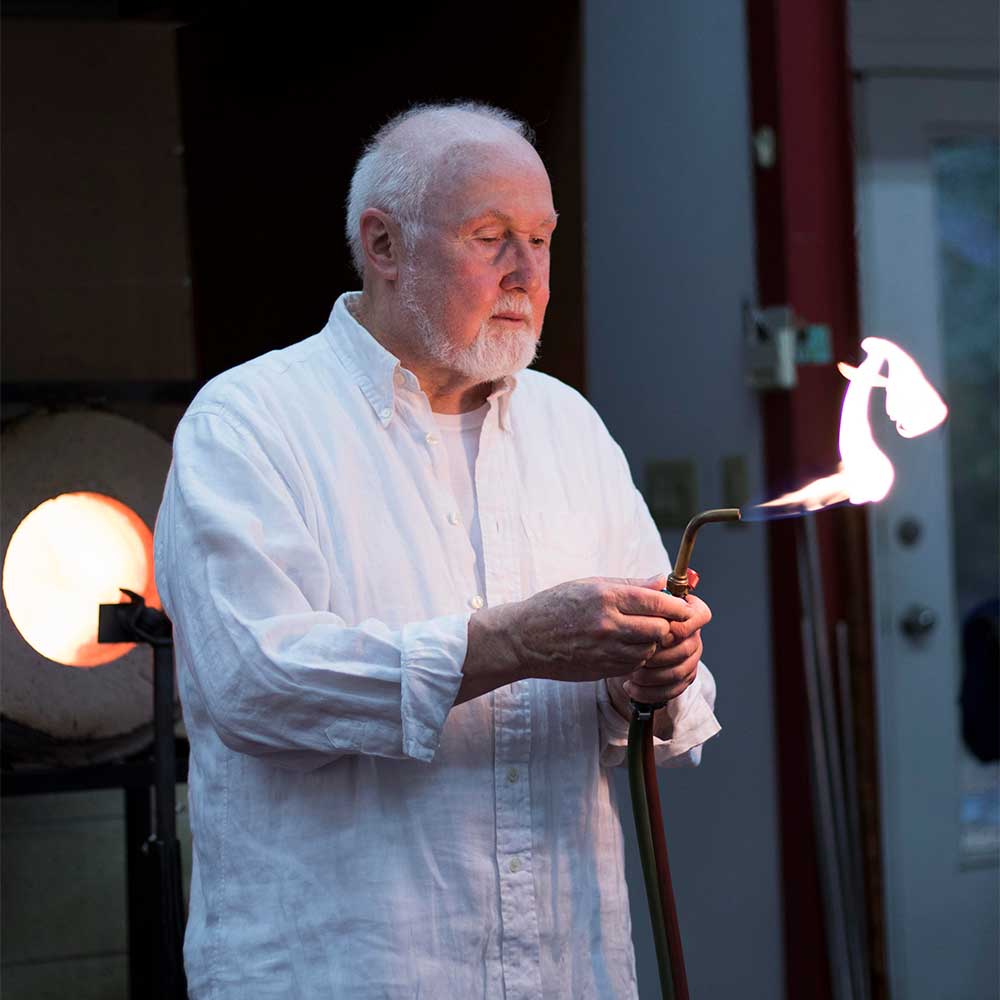
Paul Stankard
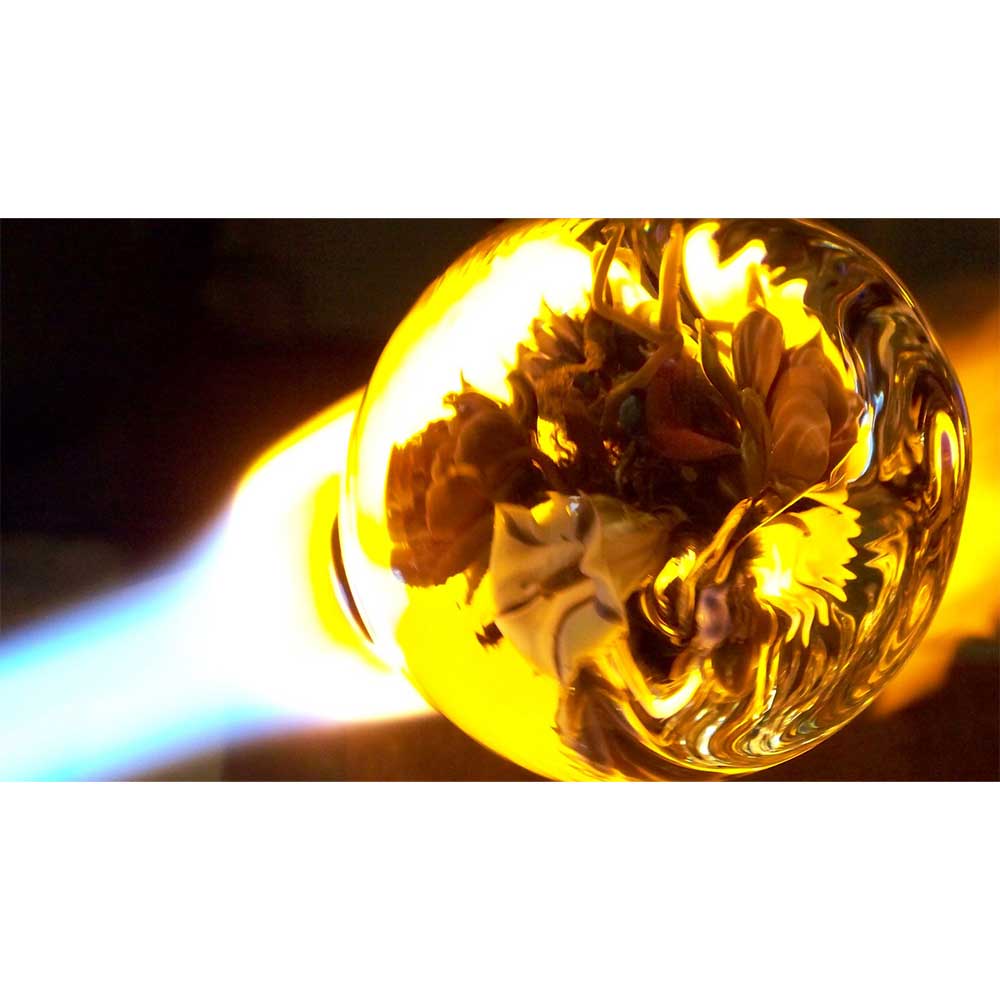
Paul Stankard
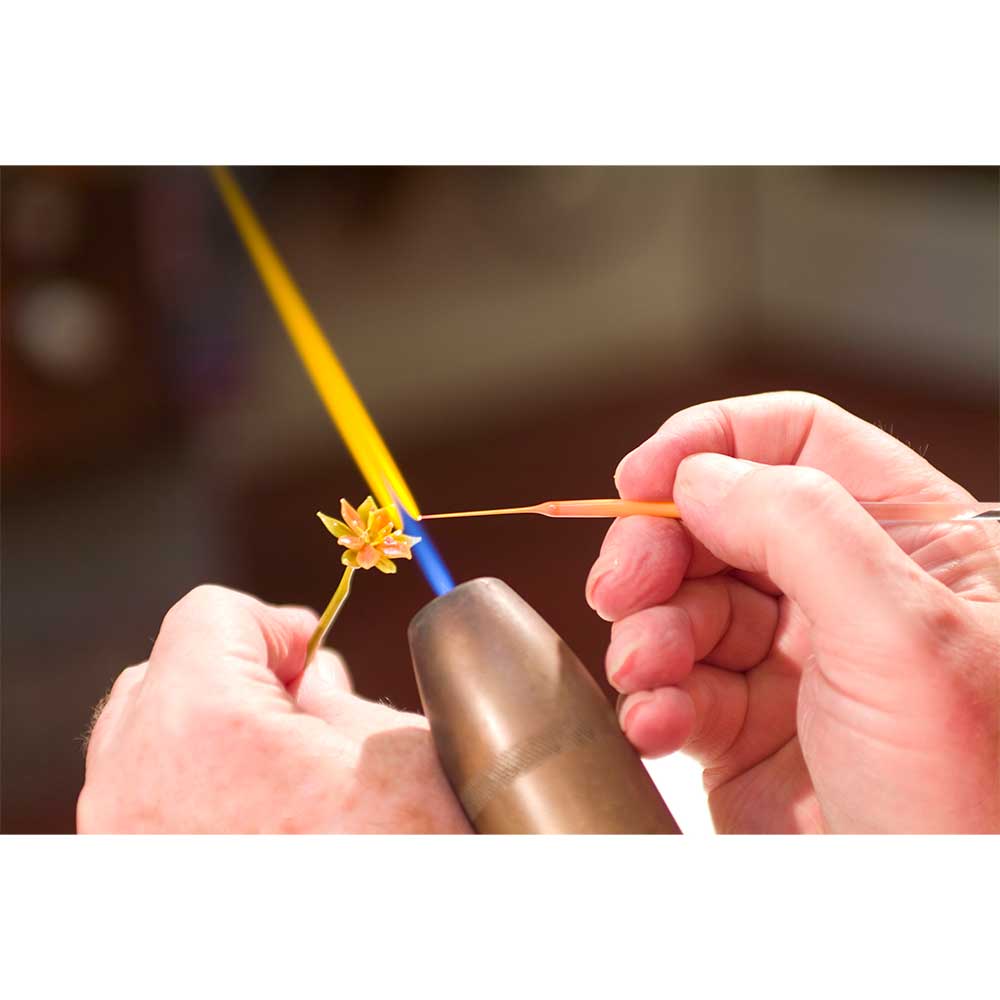
Paul Stankard
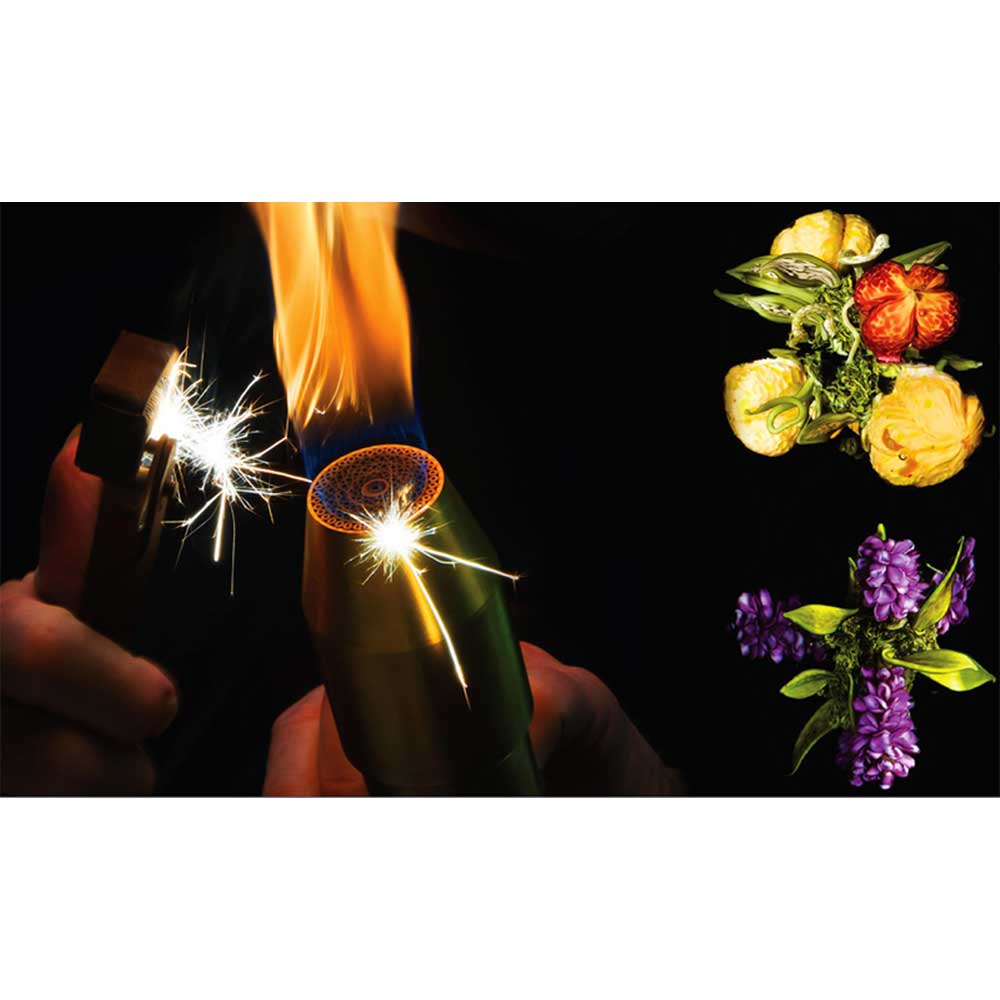
Paul Stankard
“I think of my work as referential. These are not literal flowers, though it is important to make them believable. The point of my work is not to make specimens but to evoke the experience of nature.” Stankard
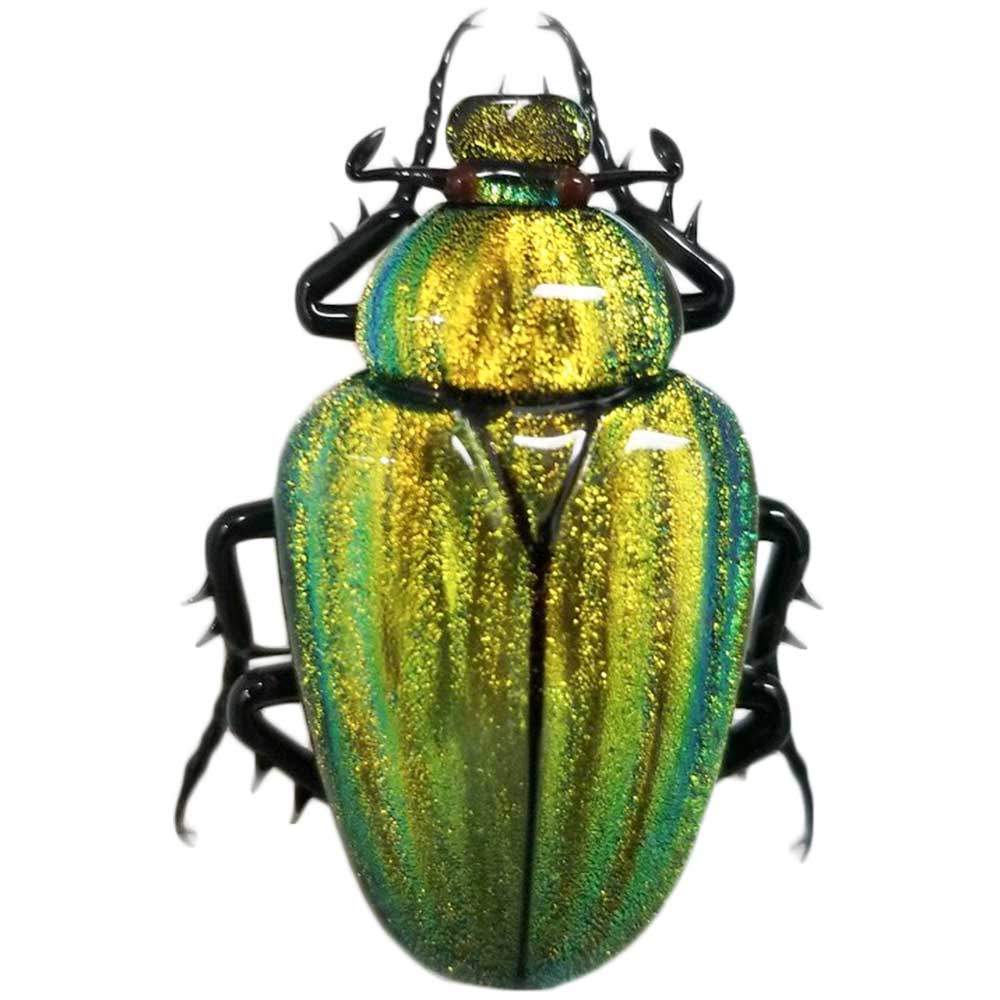
Emanuel Toffolo Beetle
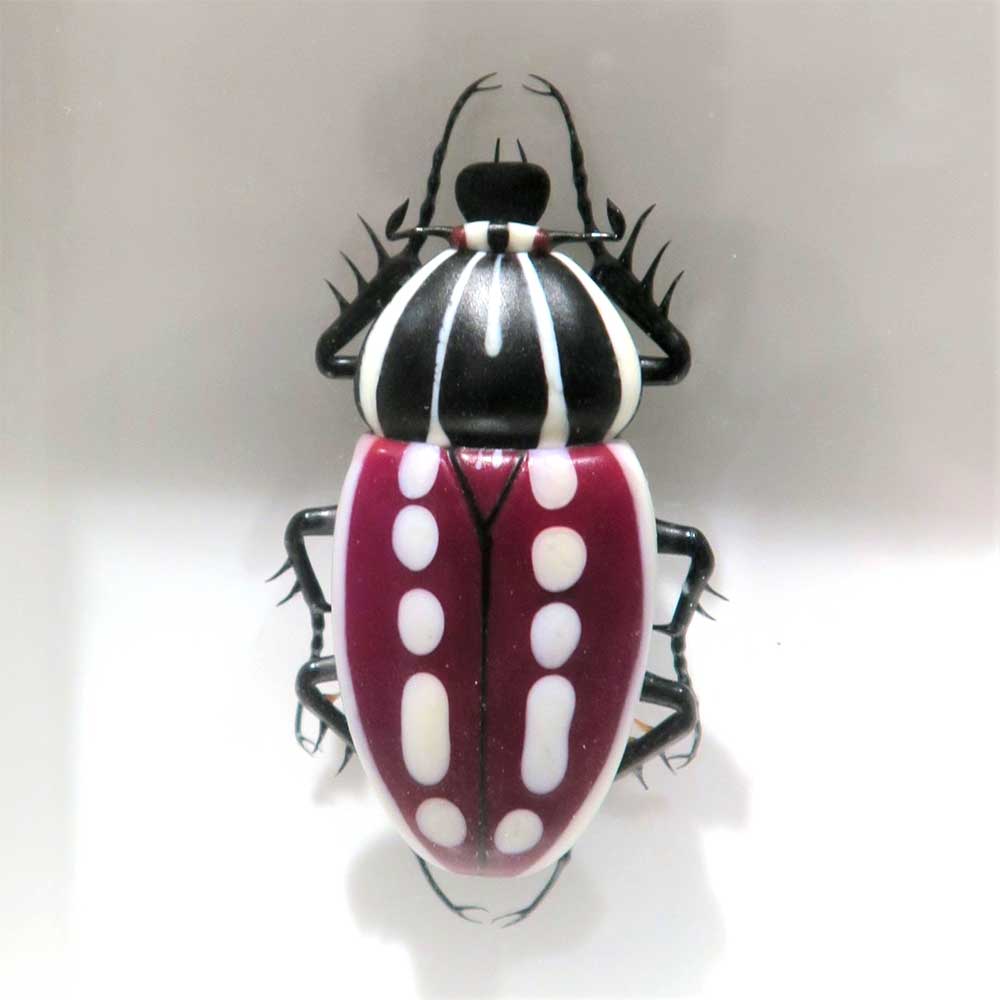
Emanuel Toffolo Spot Beetle
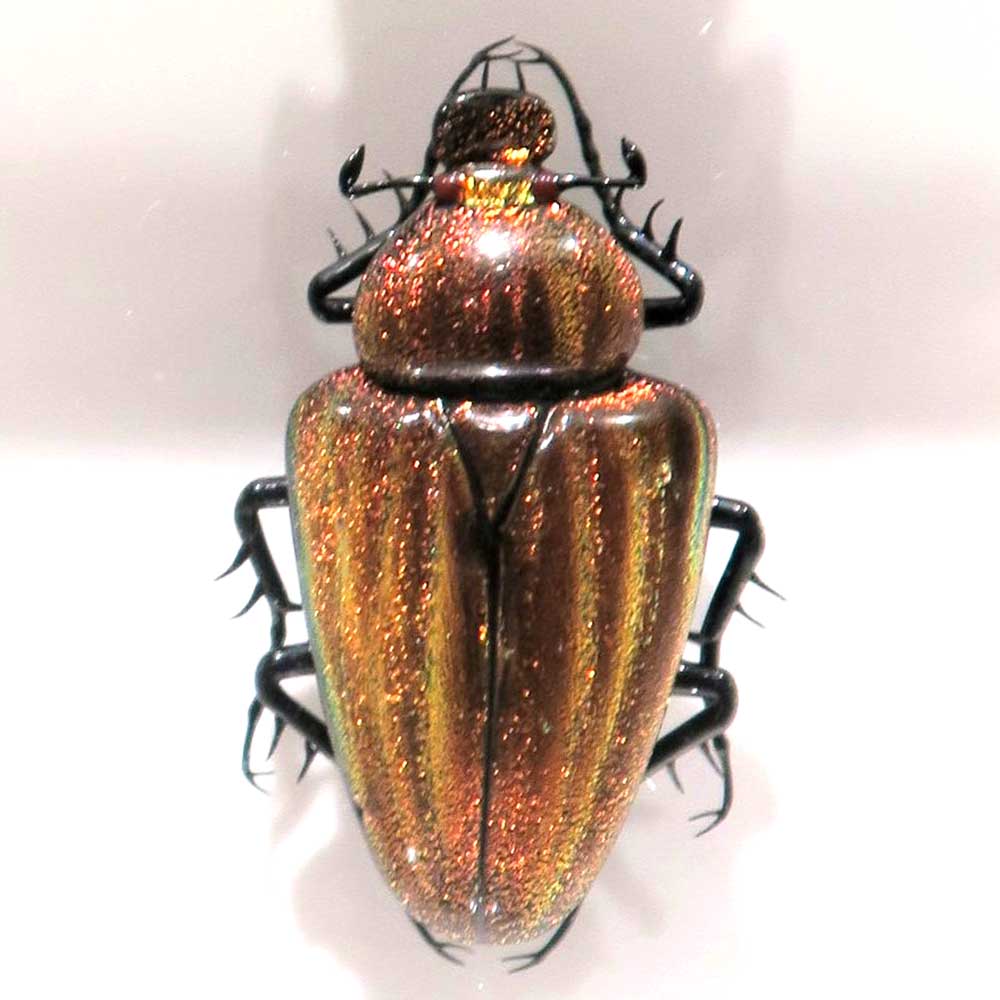
Emanuel Toffolo Brown Beetle
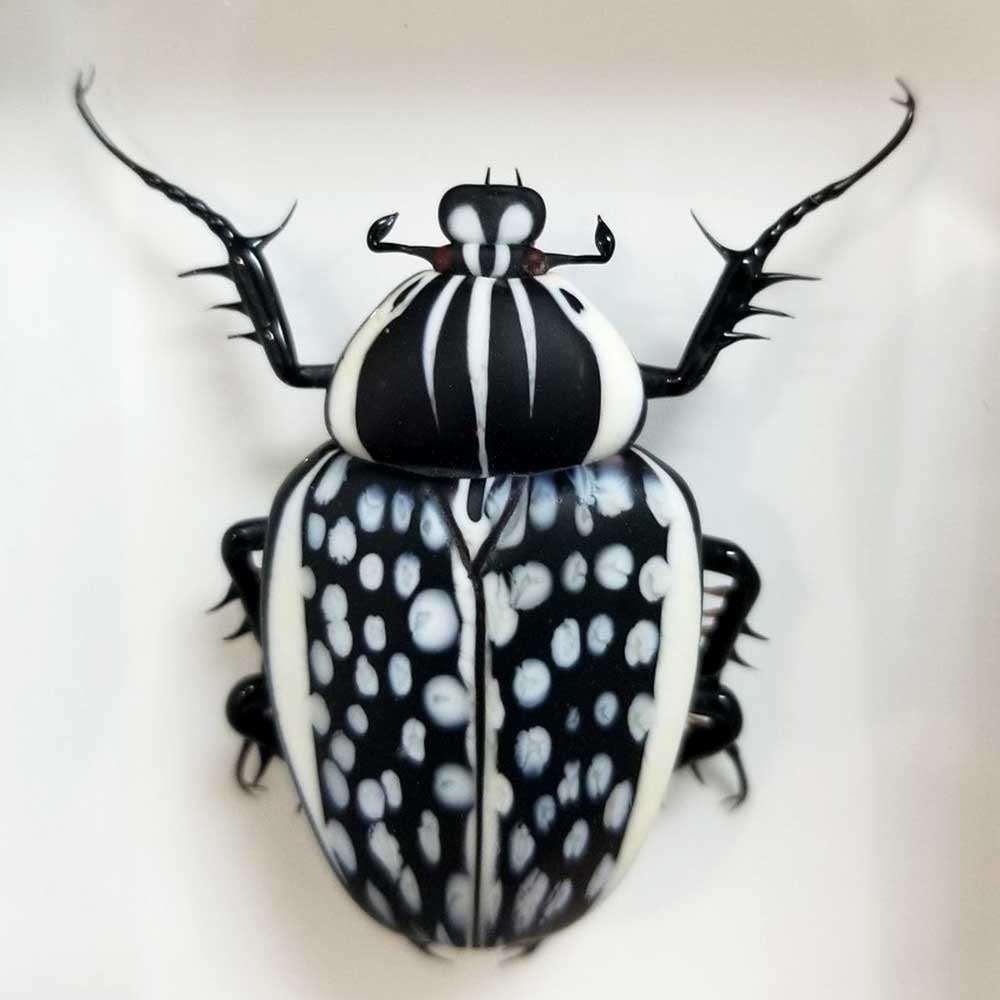
Emanuel Toffolo Goliathus Orientalia
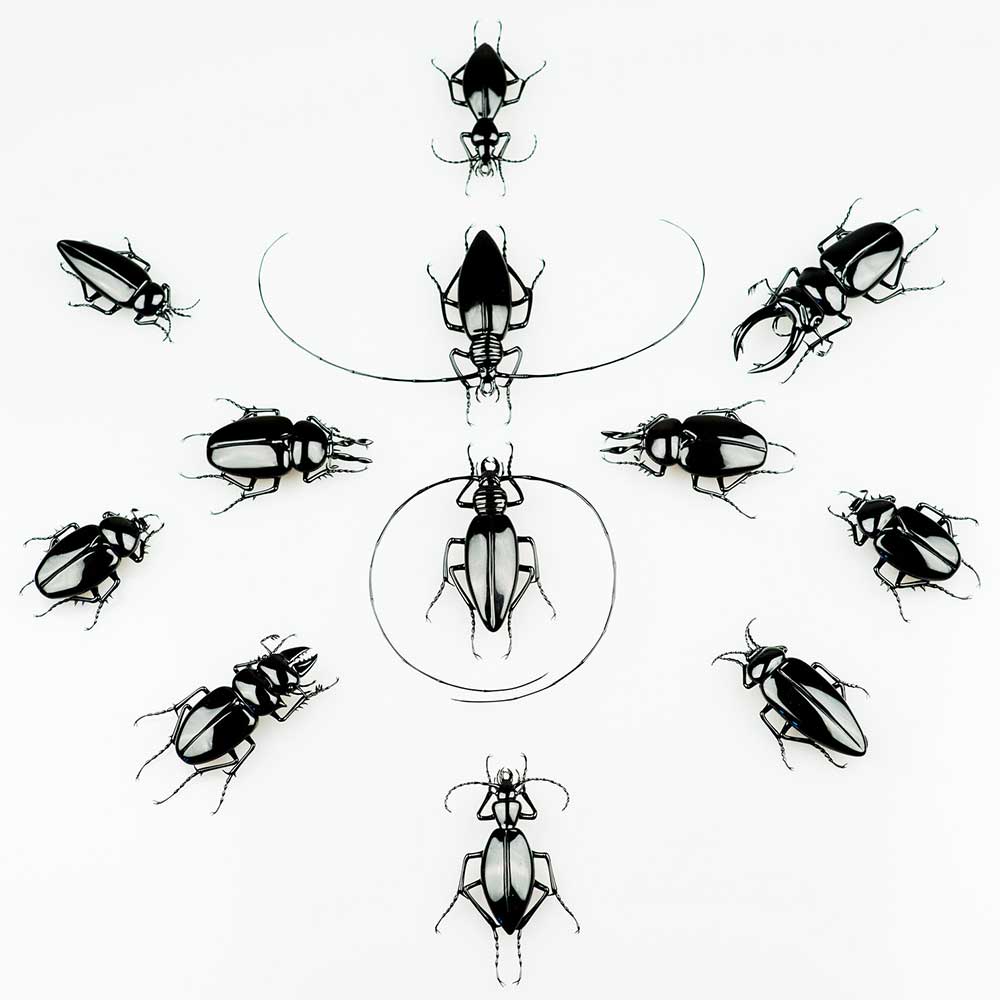
Emanuel Toffolo Beetles
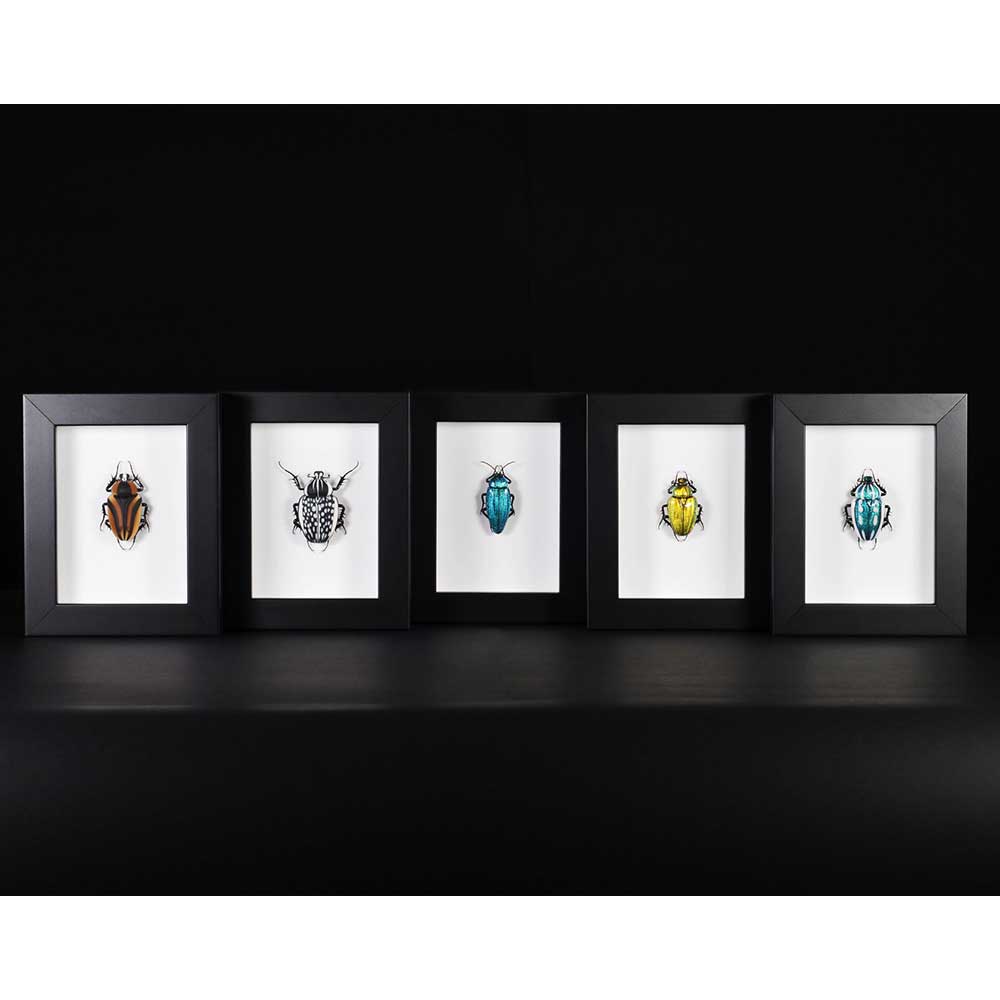
Emanuel Toffolo Beetles
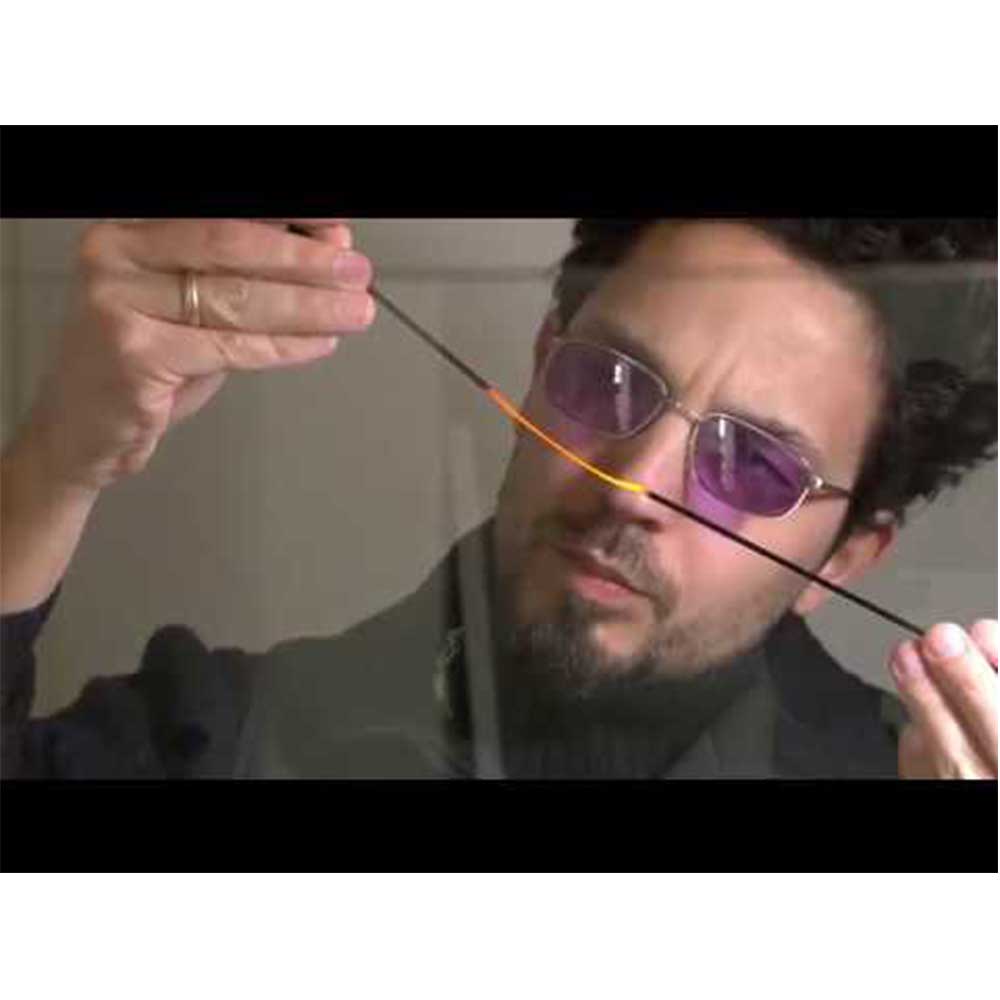
Emanuel Toffolo
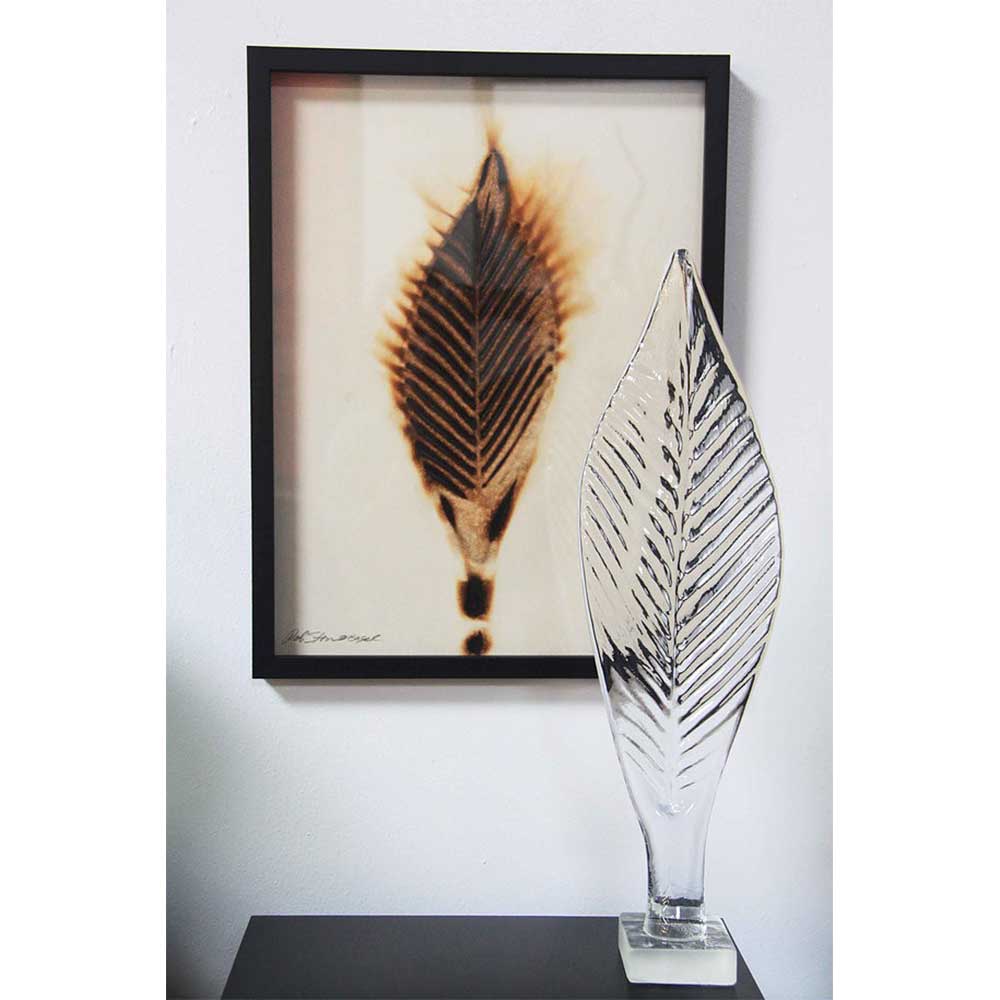
Rob Stern Leaf and Pyroprint
“We are using gravity, centrifugal force, the heat, the fire, all of these different elements, and in many ways, we are not totally in control. It’s letting the glass also make the form. Going with it, I want the pieces to be very often as if they are from nature. And so you are not sure, is it man-made? Is it made by nature?” Chihuly.
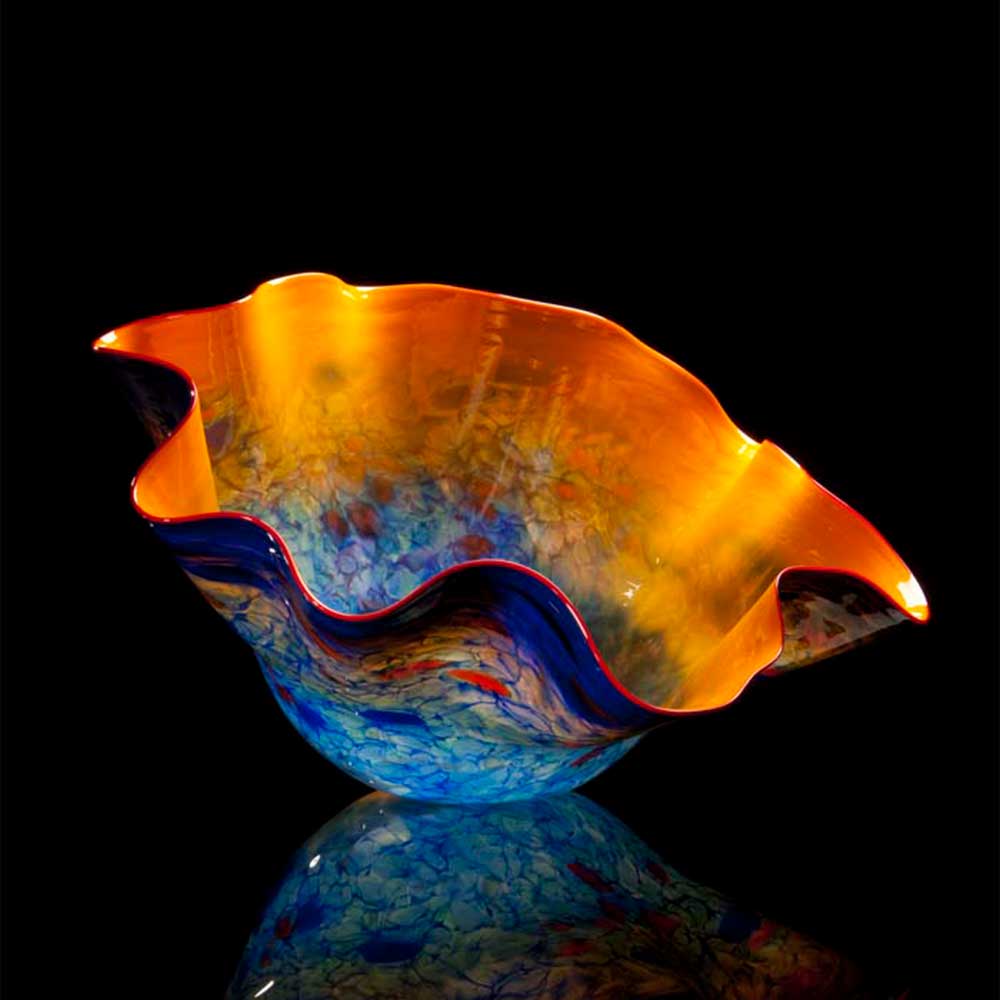
Dale Chihuly Macchia
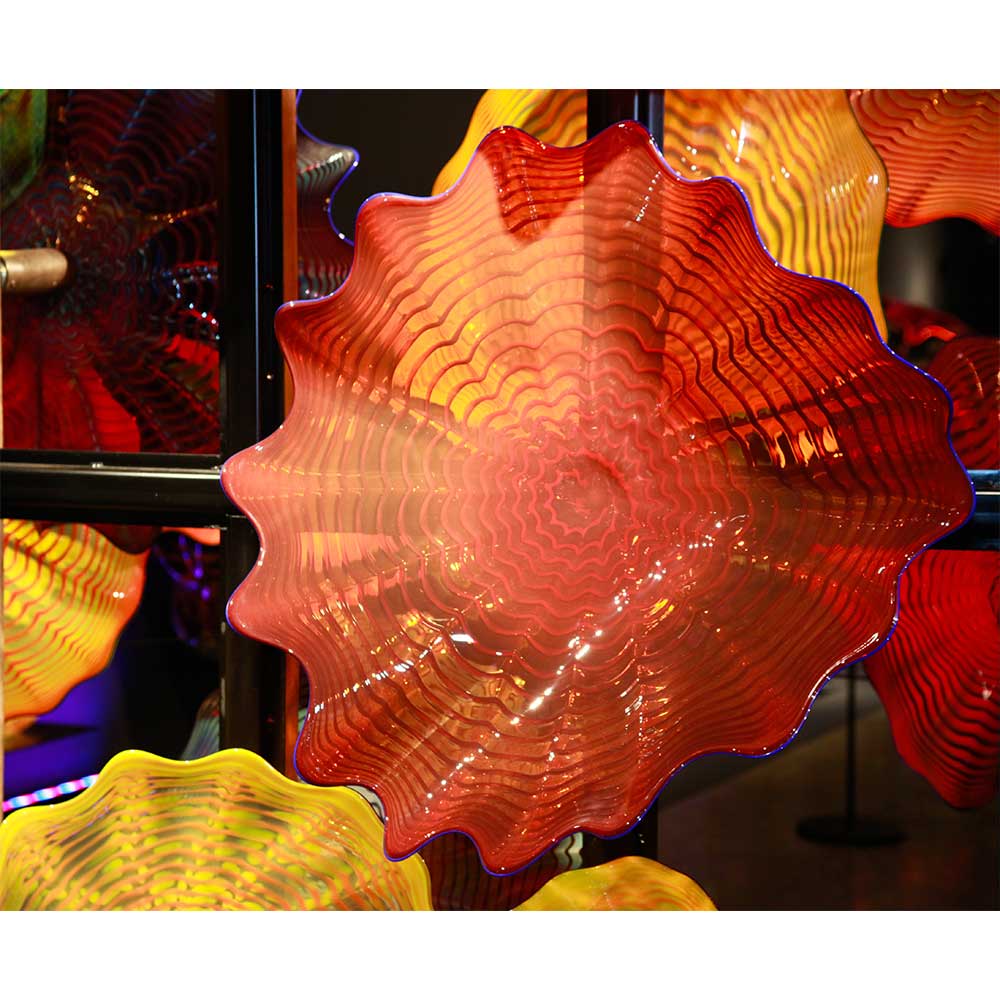
Dale Chihuly Persian Wall detail
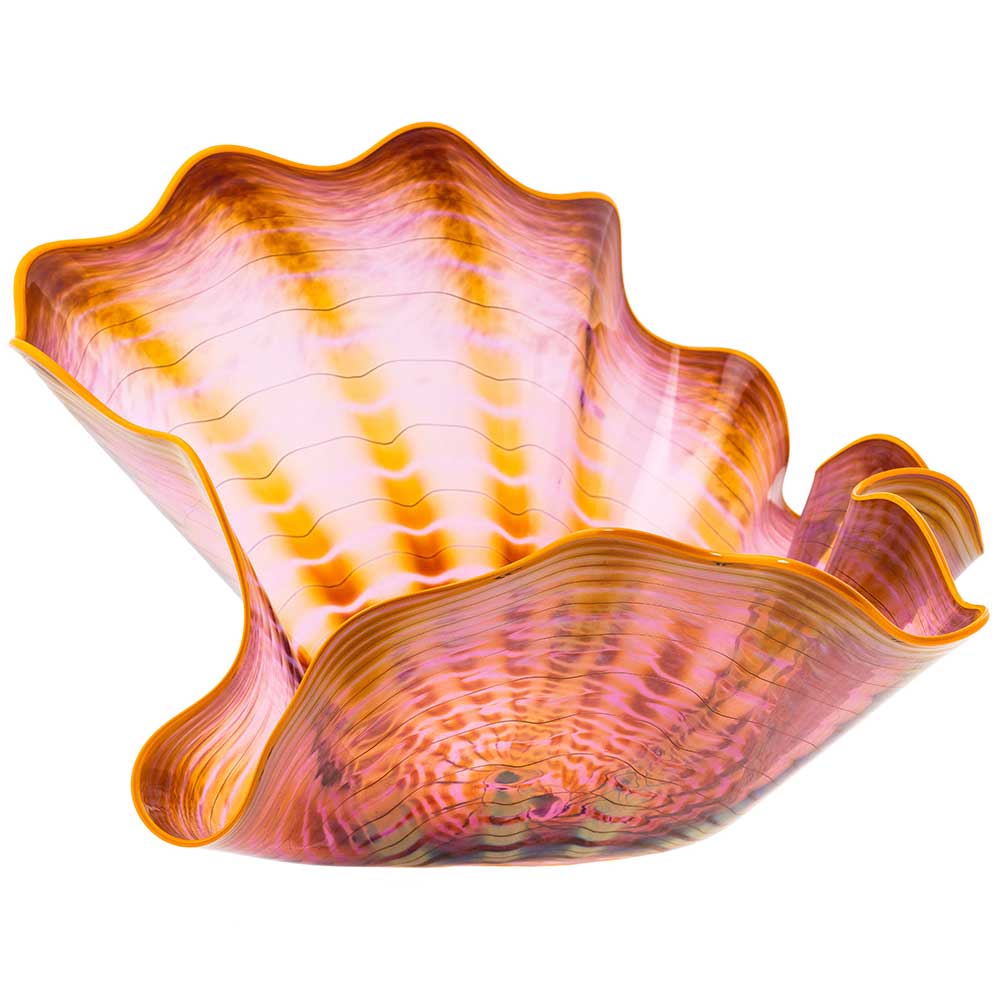
Dale Chihuly Macchia
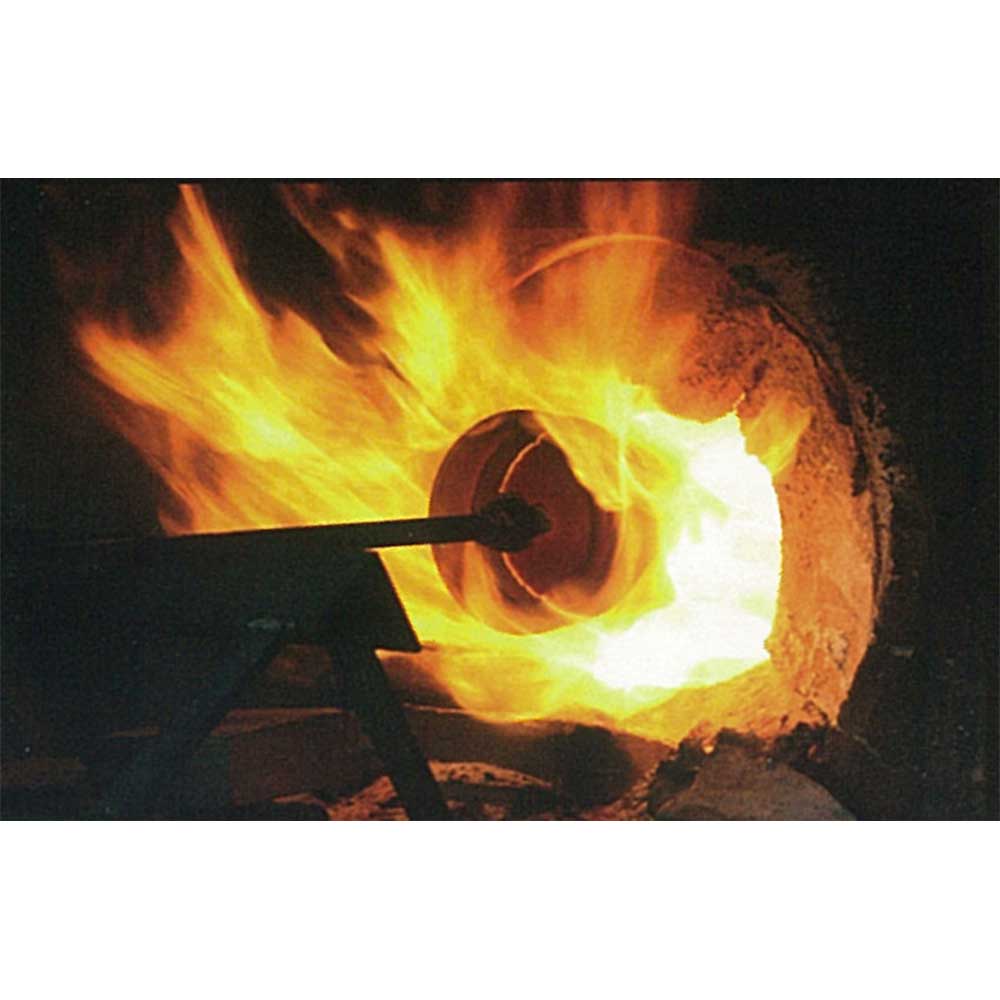
Glass in fire
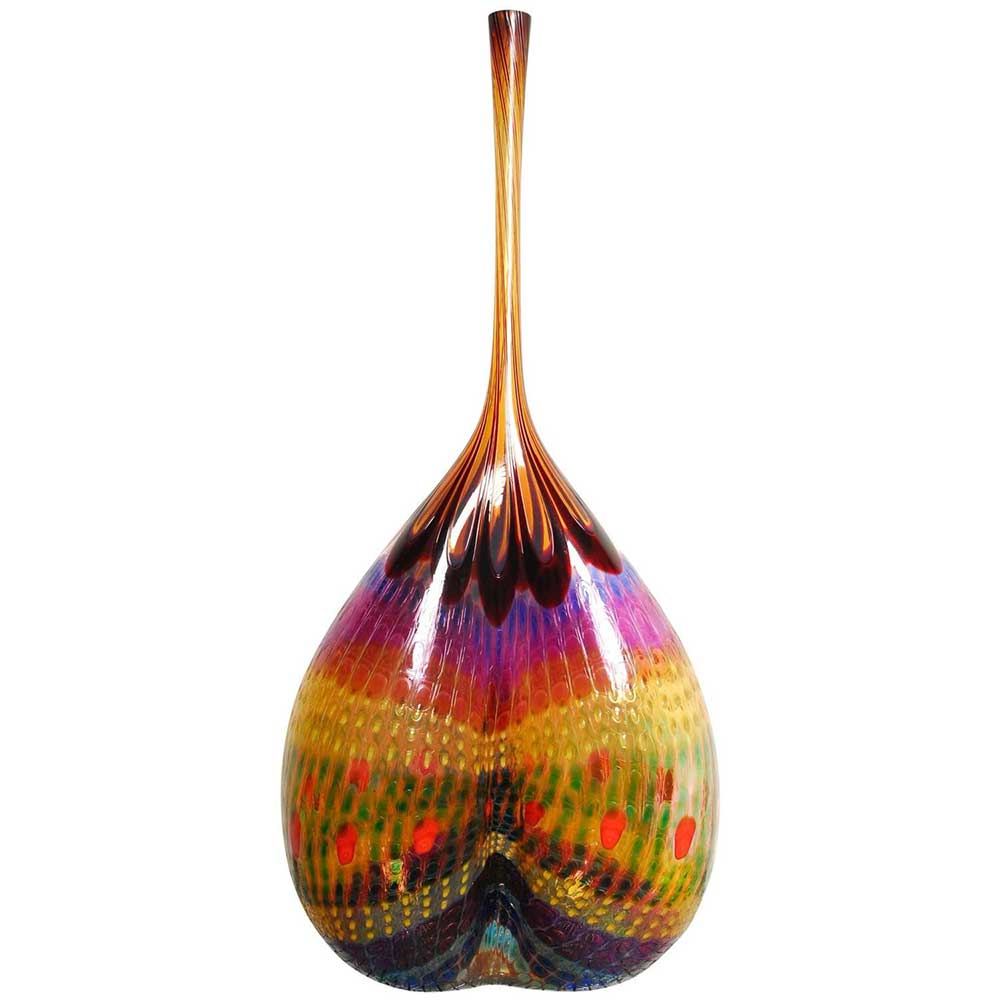
Stephen Rolfe Powell Vase
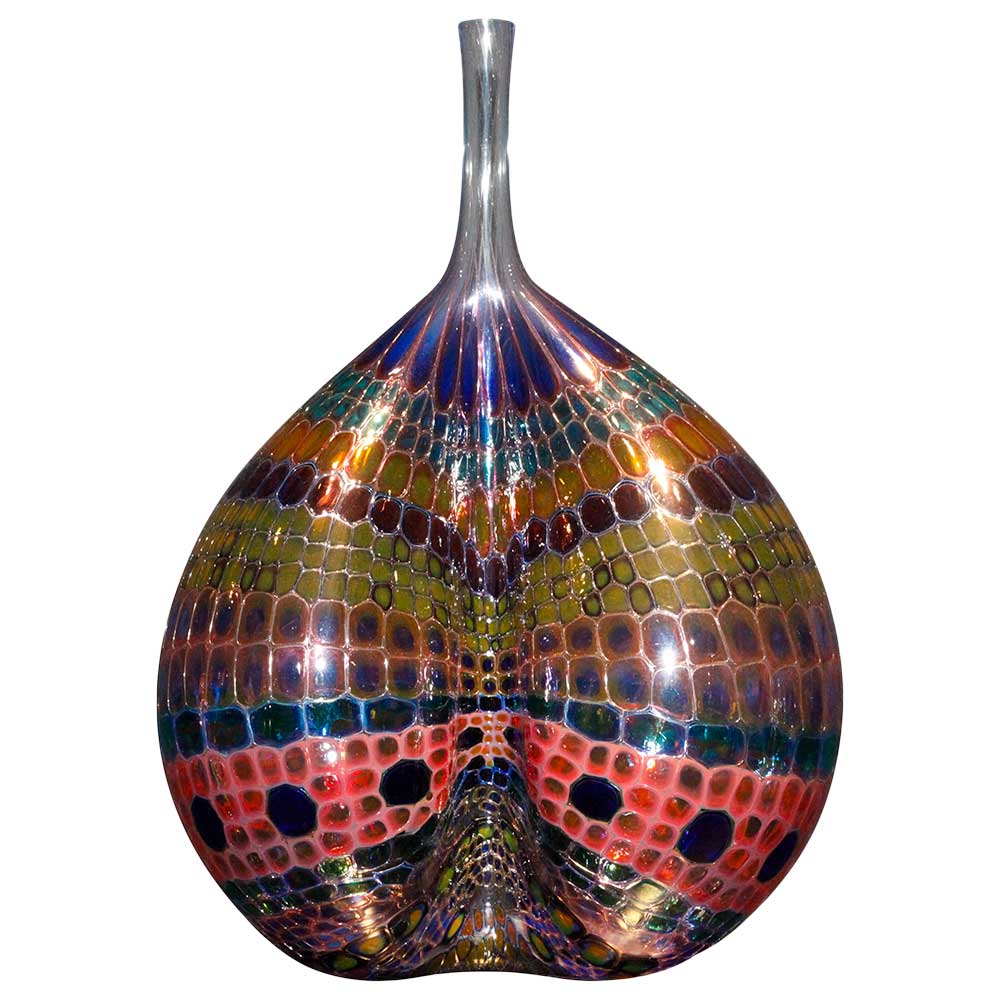
Stephen Rolfe Powell Vase
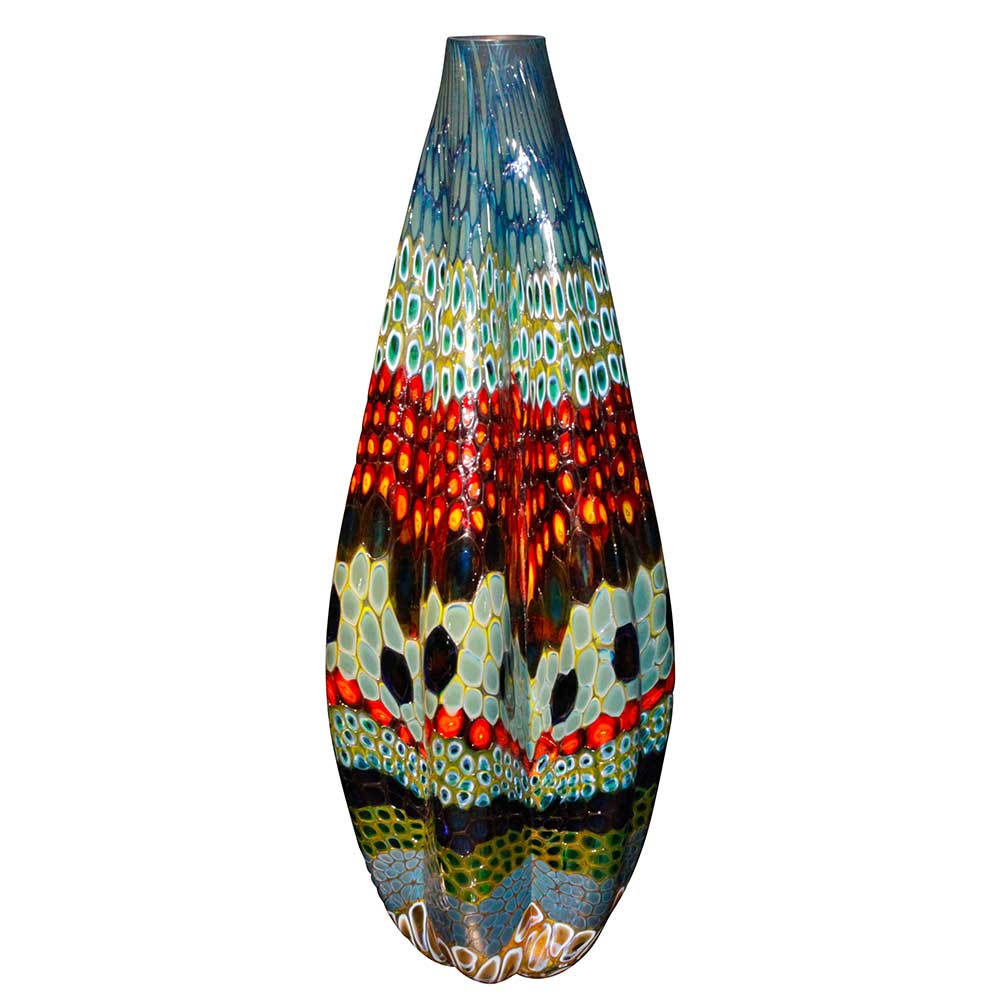
Stephen Rolfe Powell Vase
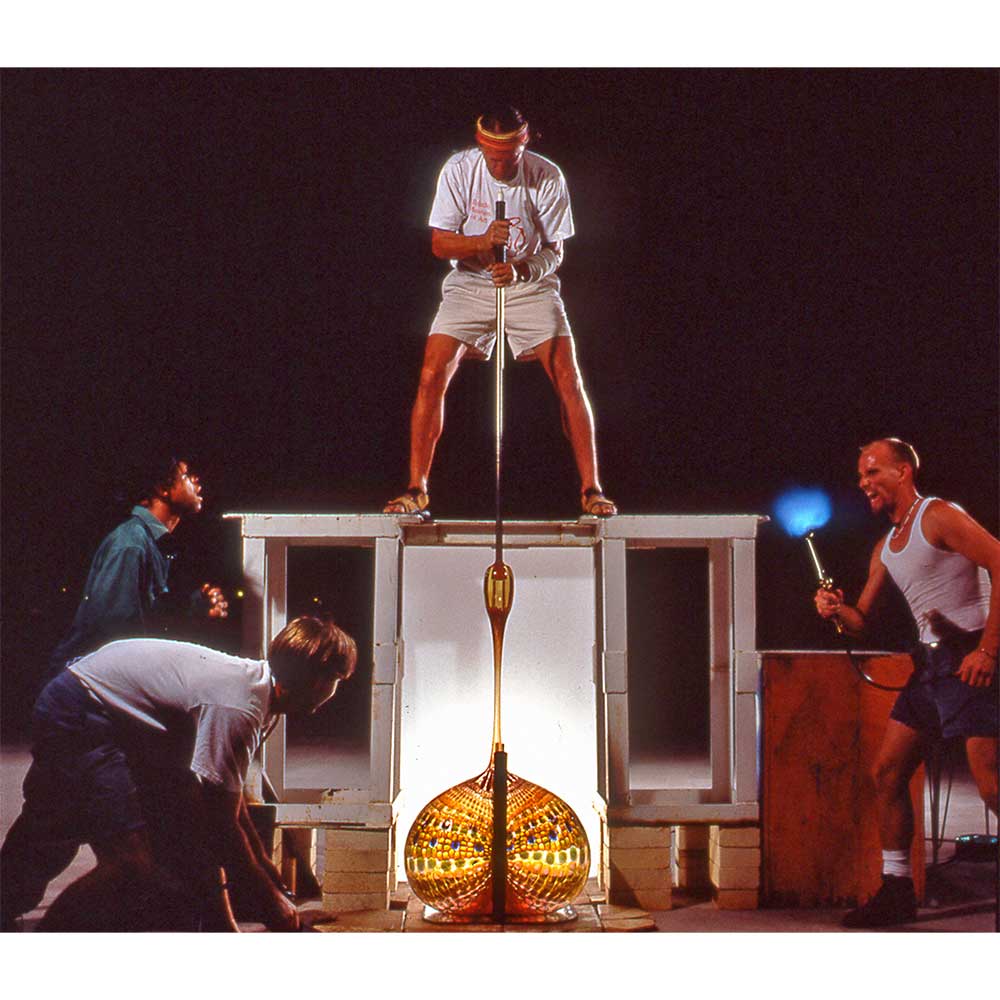
Stephen Rolfe Powell blowing glass
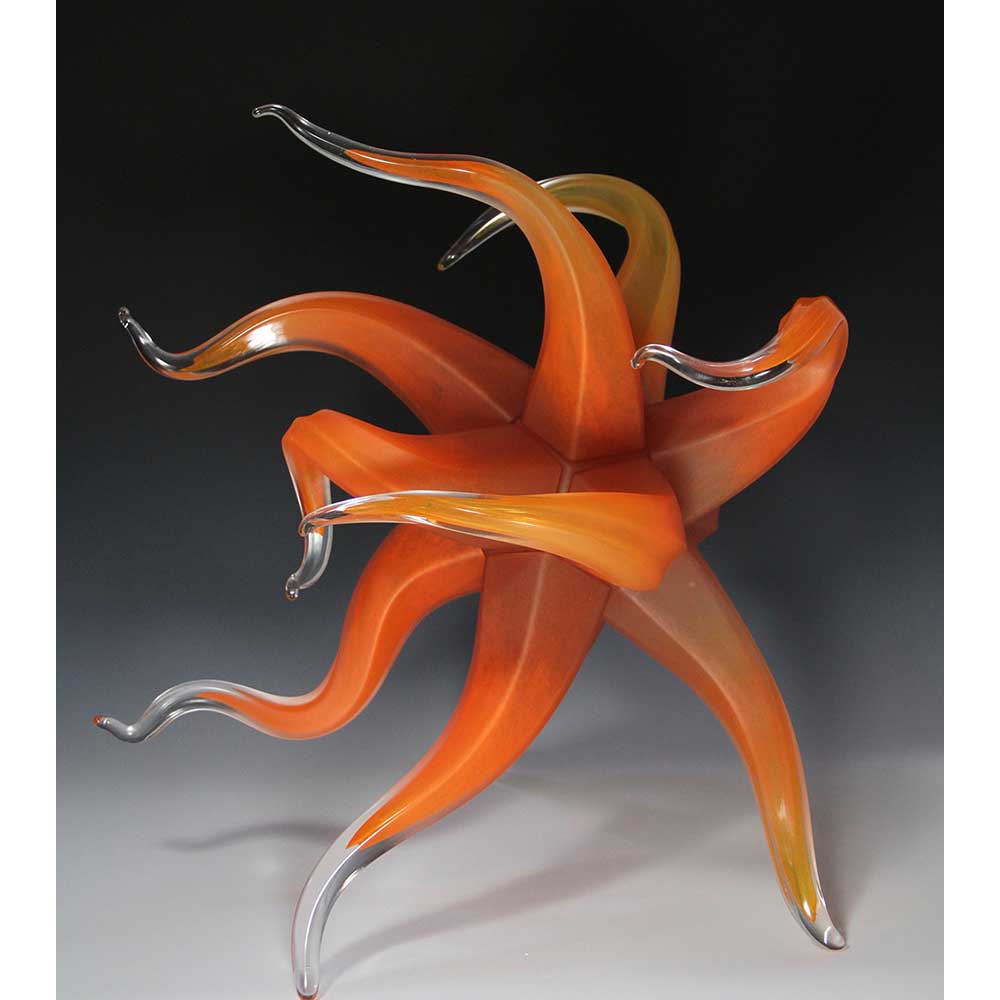
Rob Stern Firenze Windstar
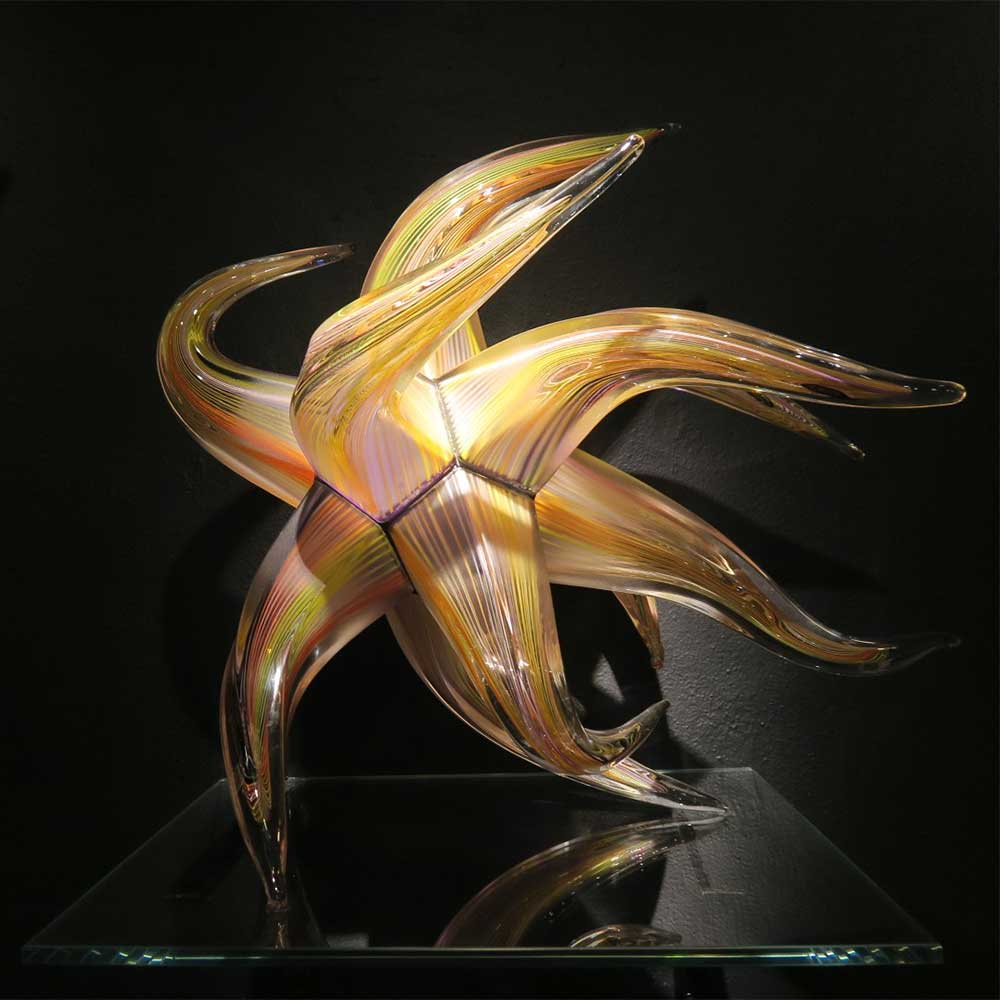
Rob Stern Polaris Windstar
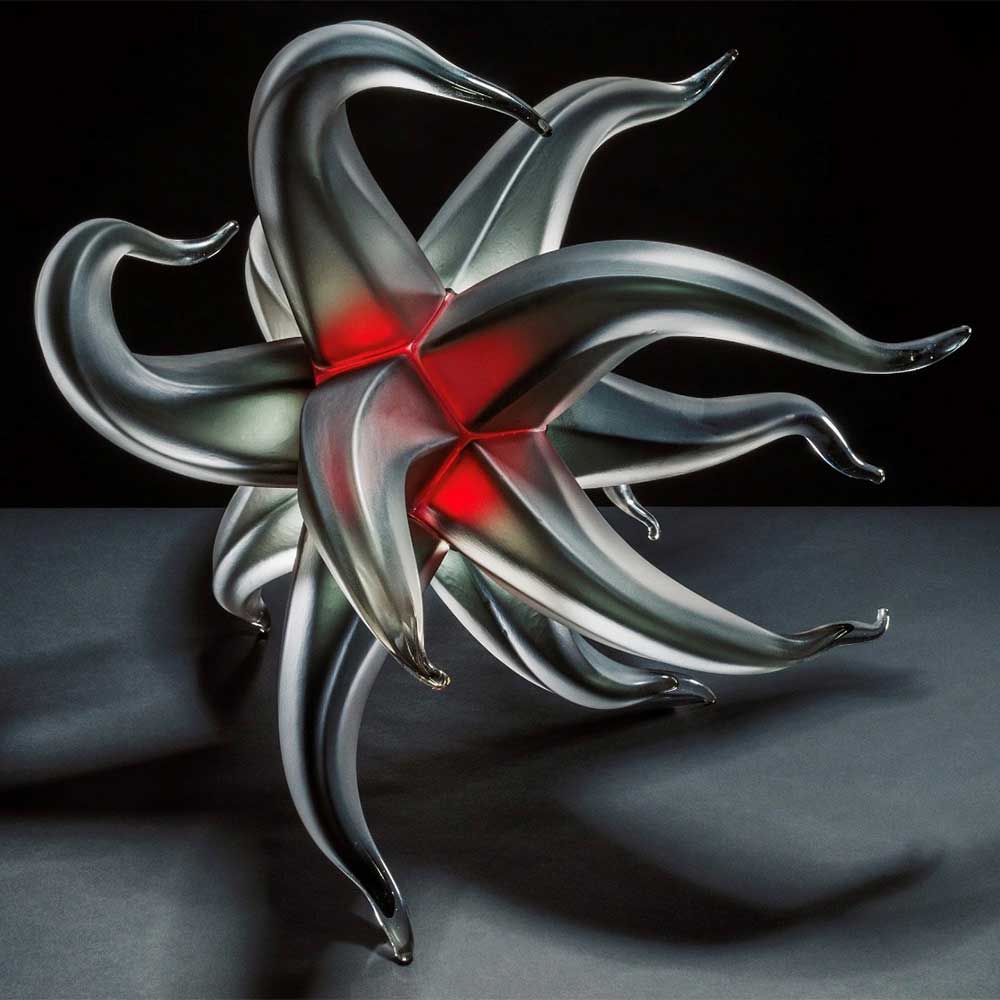
Rob Stern Red Dawn Windstar
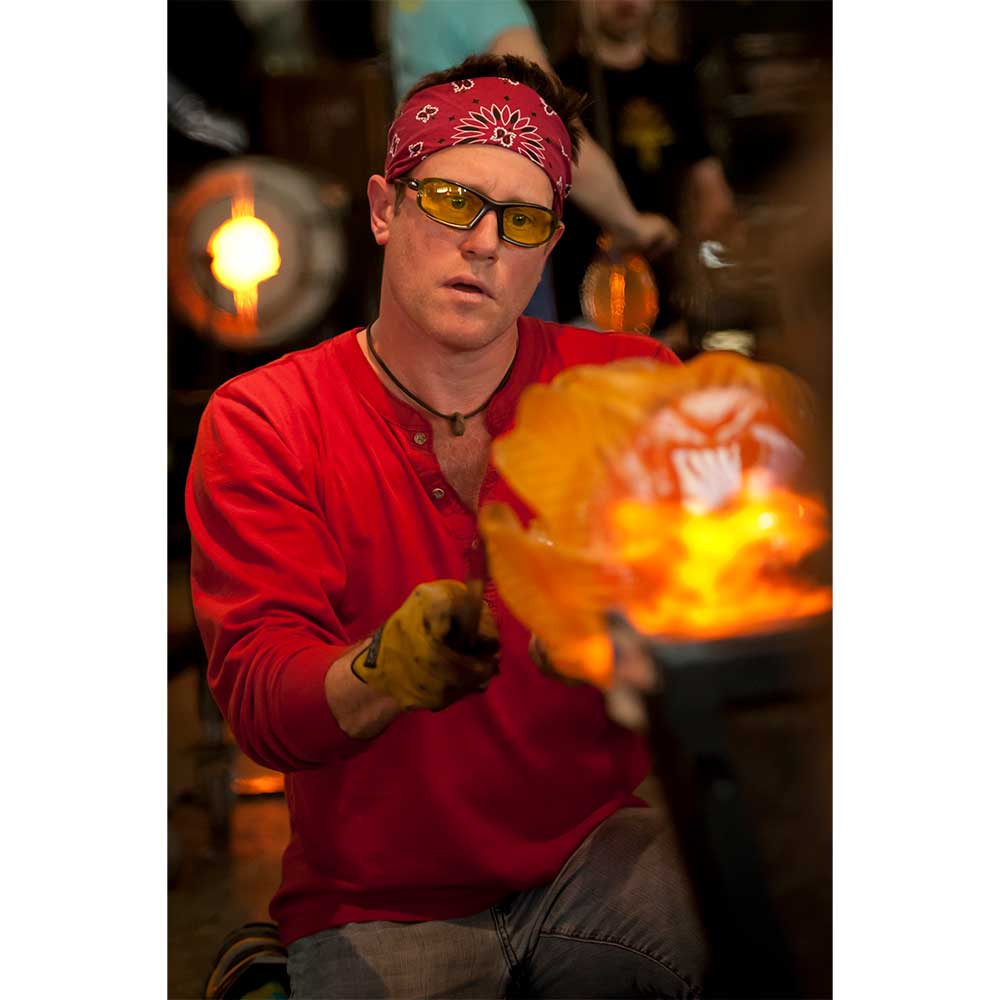
Rob Stern making a leaf vessel
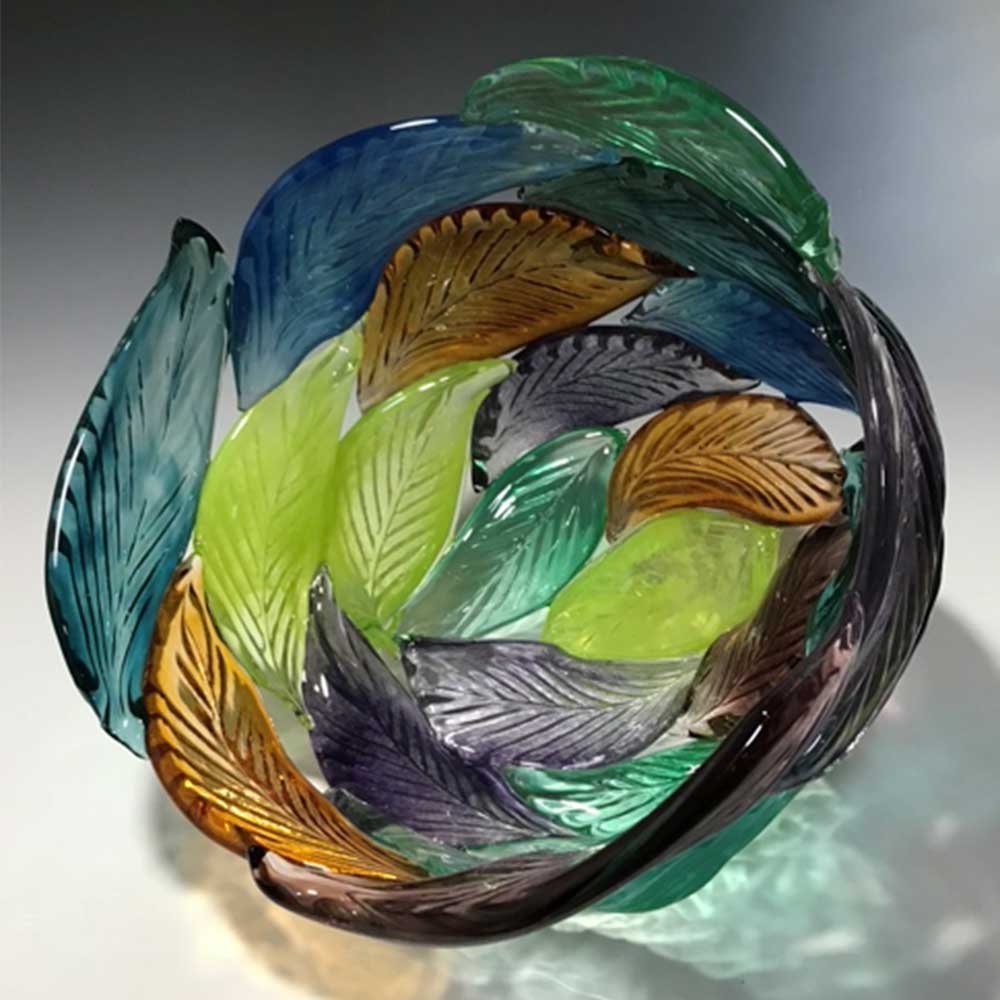
Rob Stern Leaf Vessel
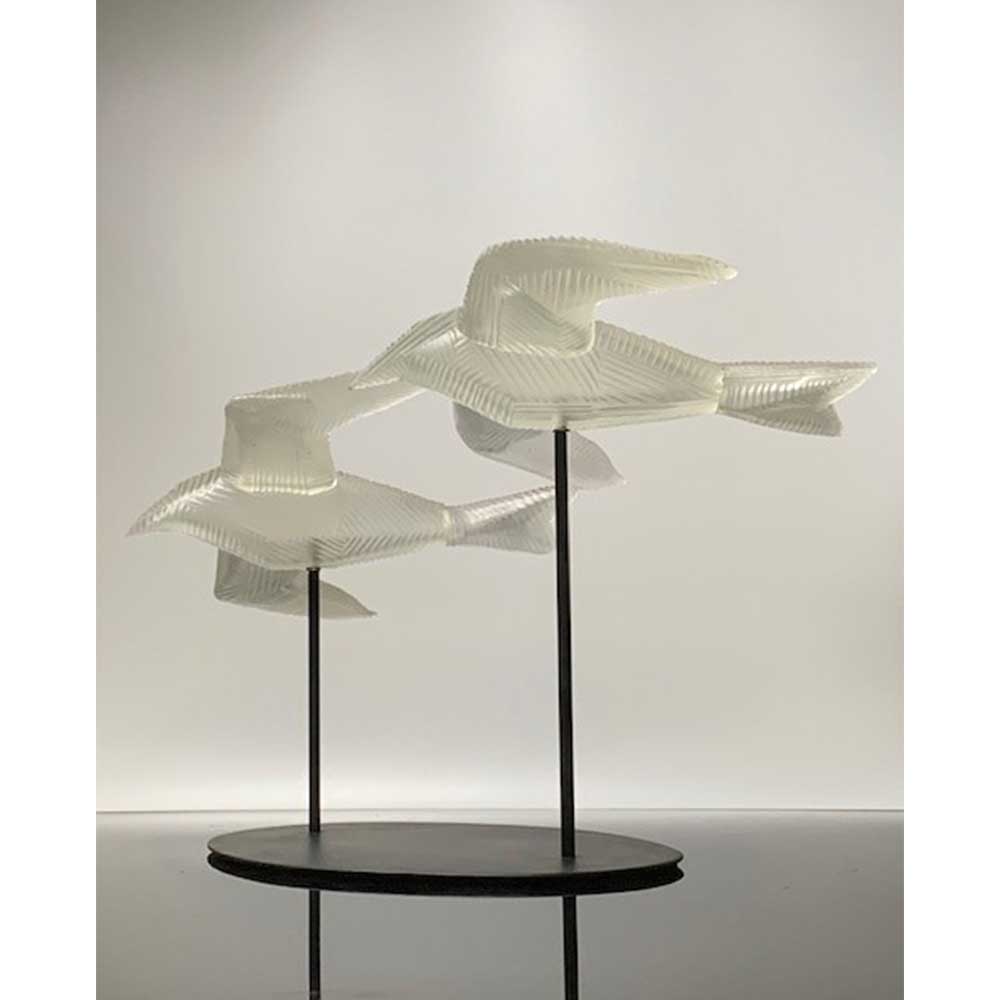
Rob Stern Migration
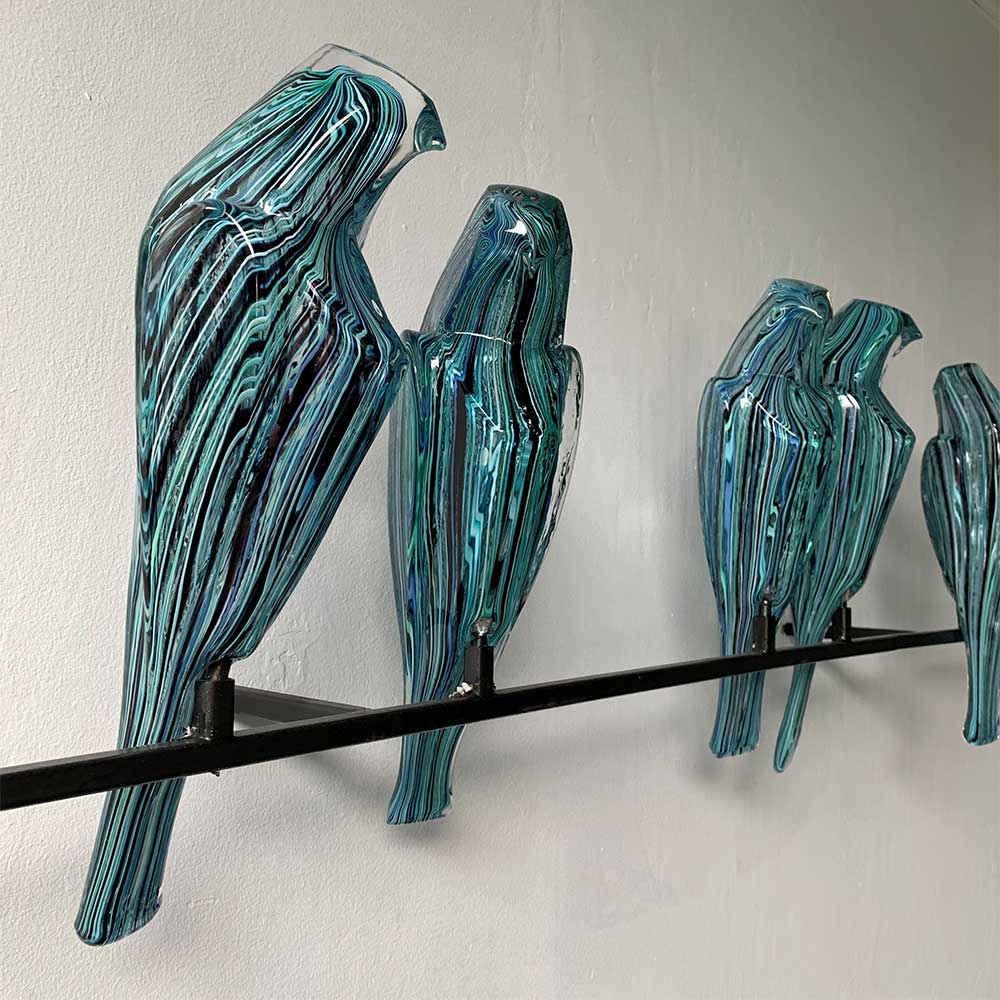
Rob Stern Perch
“take a very close look (microscopic) at the details, a somewhat cellular structuring of colored patterns that can be found throughout nature and science. I hope viewing both from afar and close-up, gives everyone a reprieve from whatever they might be dealing with, even just for a moment.” Powell
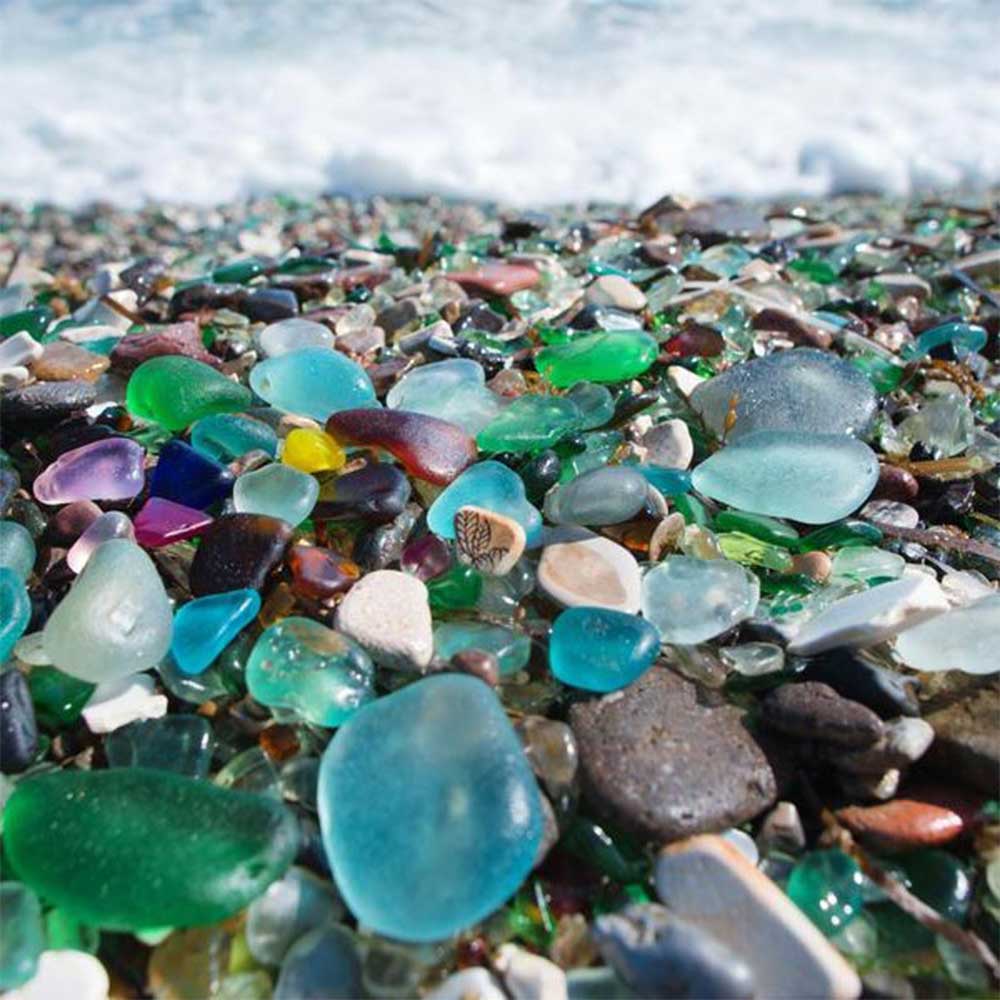
Sea glass
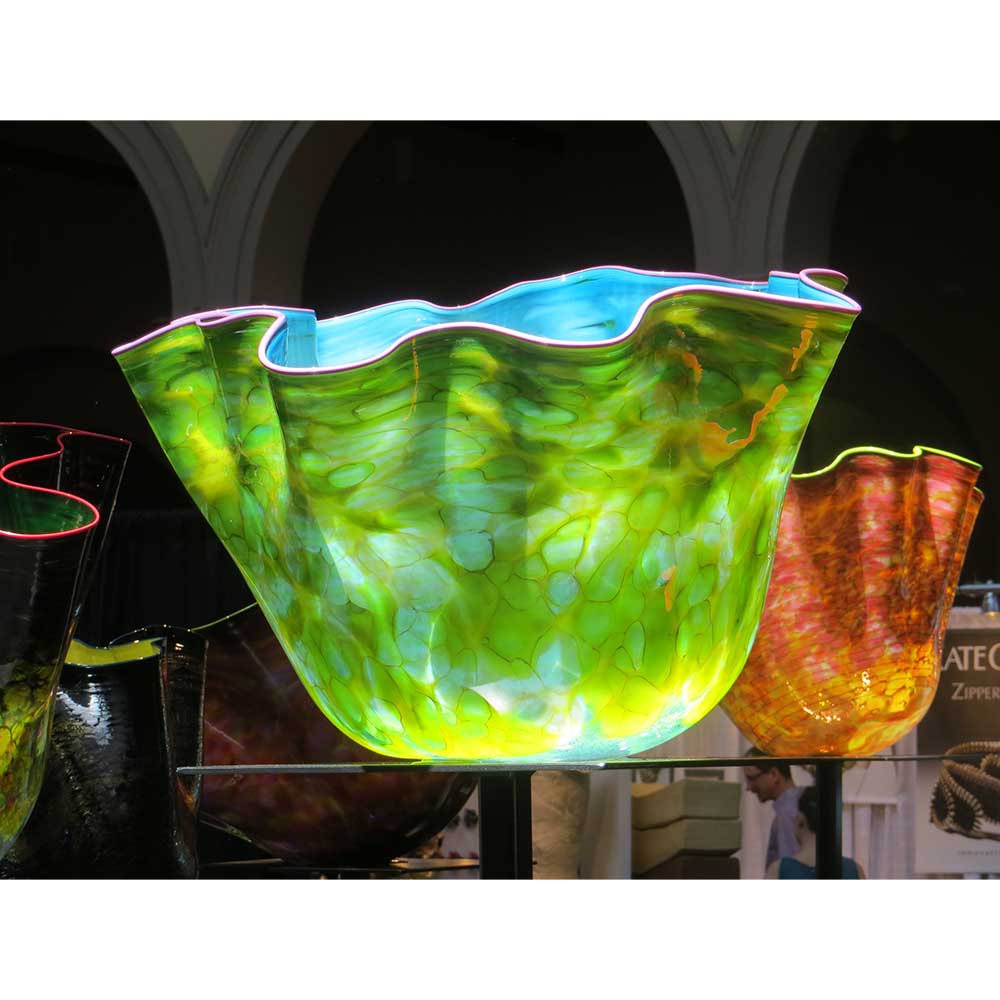
Dale Chihuly Macchia at the Smithsonian Museum
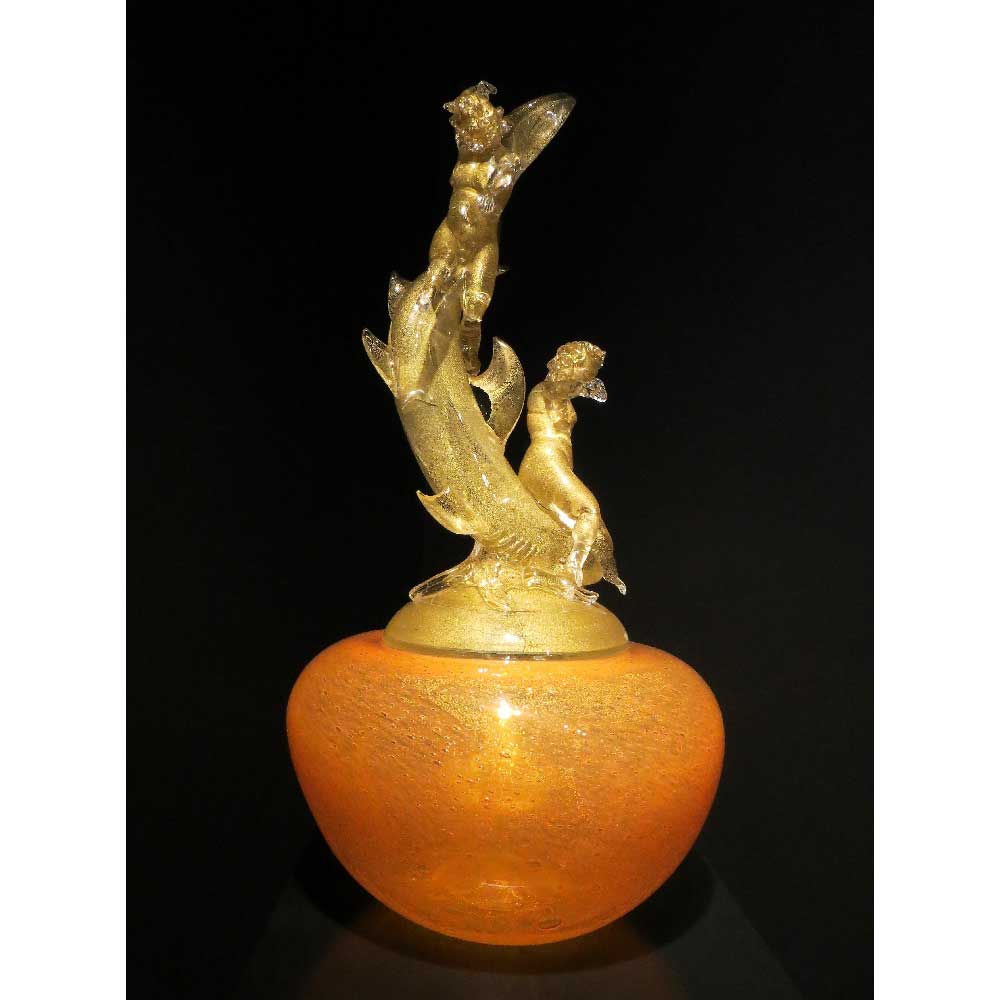
Dale Chihully and Pino Signoretto Vase
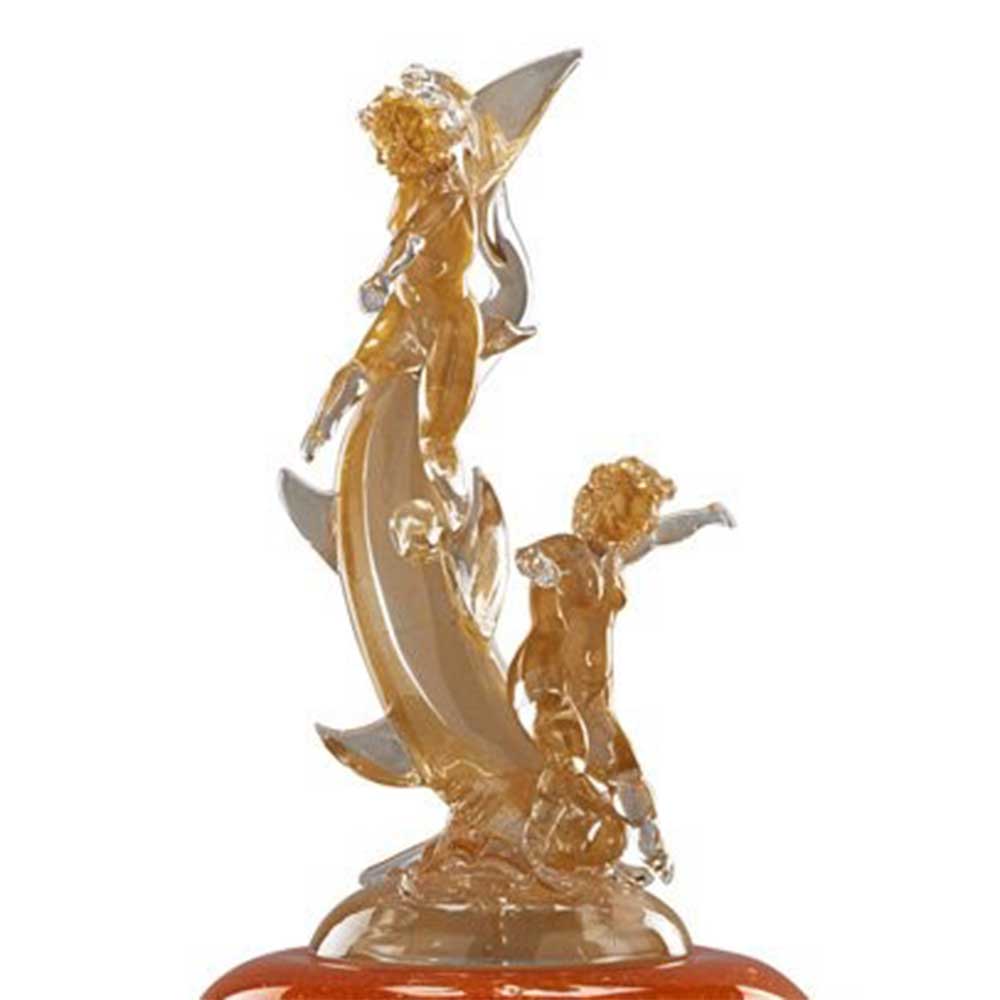
Dale Chihully and Pino Signoretto Vase detail
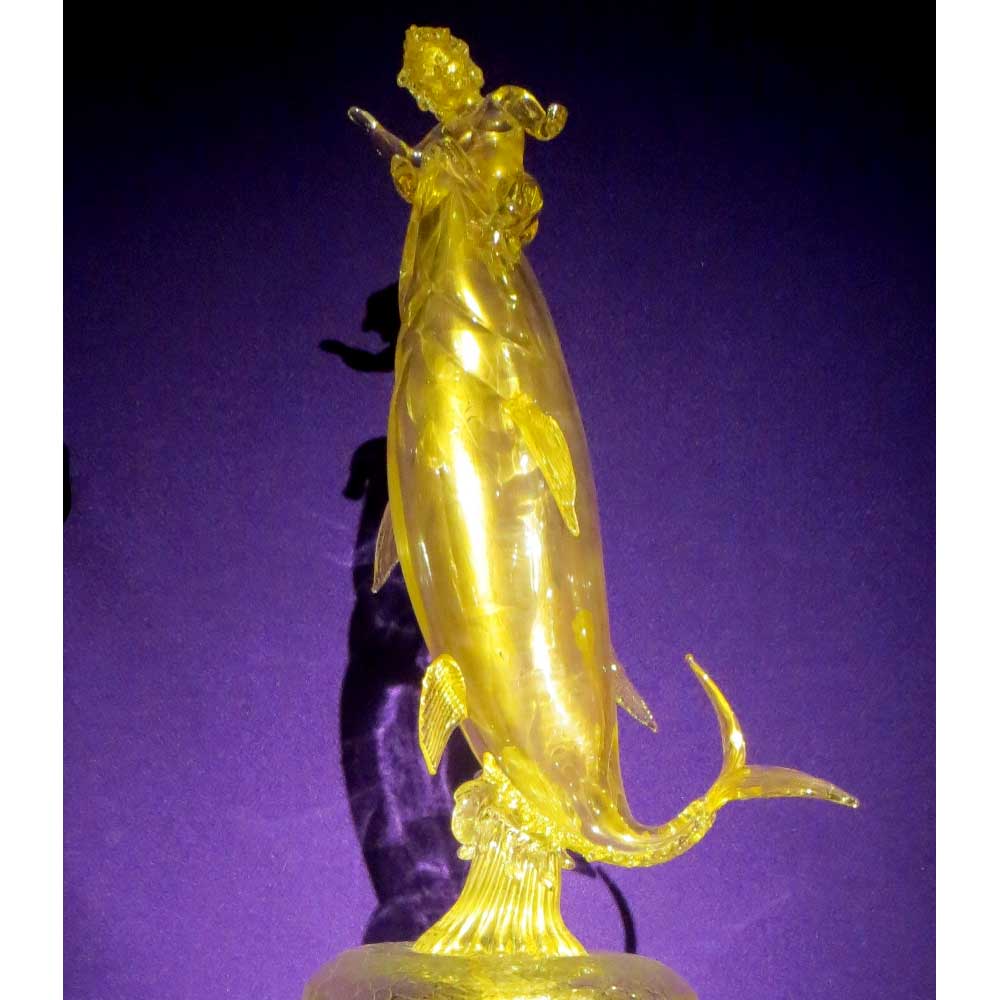
Dale Chihully and Pino Signoretto Vase detail
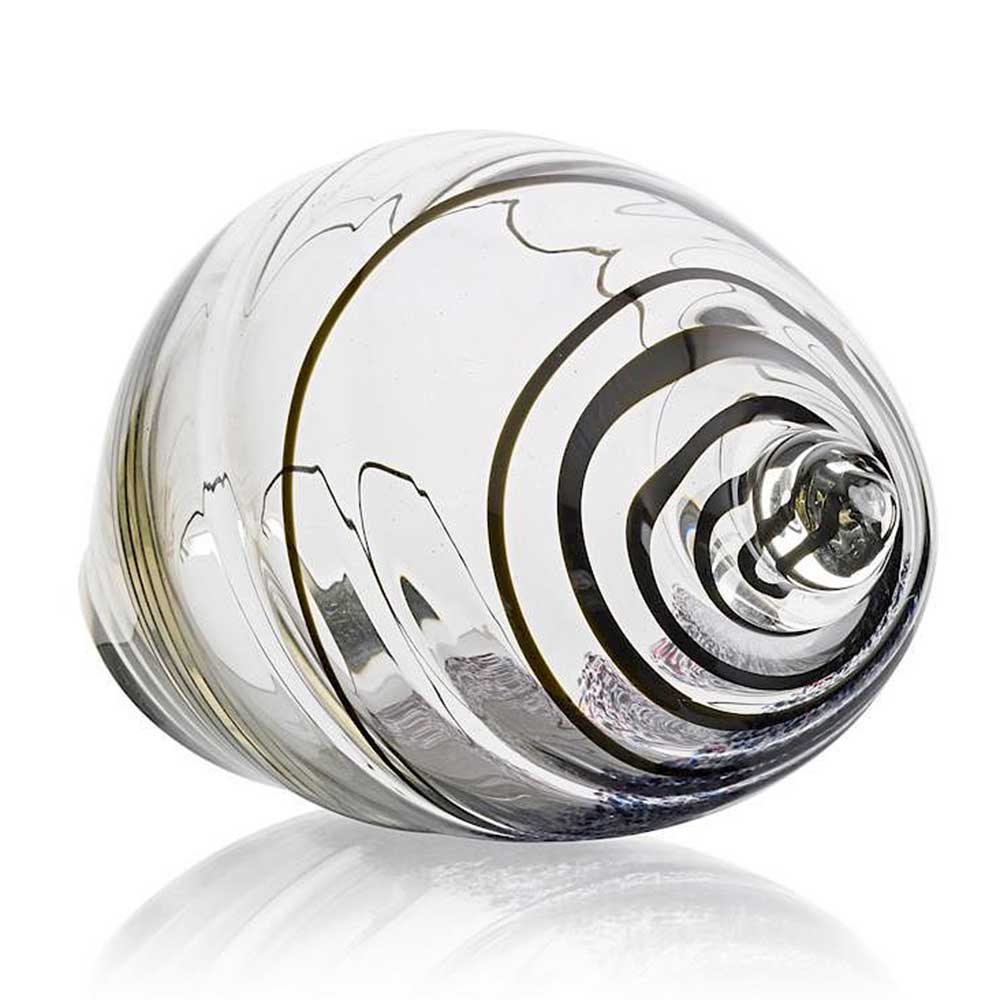
Lino Tagliapietra Conchiglia
“My aesthetic resides at the crossroads where humans and nature intersect. Between organic and angular, a space, which connects the temporary man-made to the pre-existing and eternal cosmos. Here we “begin to measure our perspective and contemplate the perception of our place in the world as it is one that is always changing with evolution, light and time.” Stern
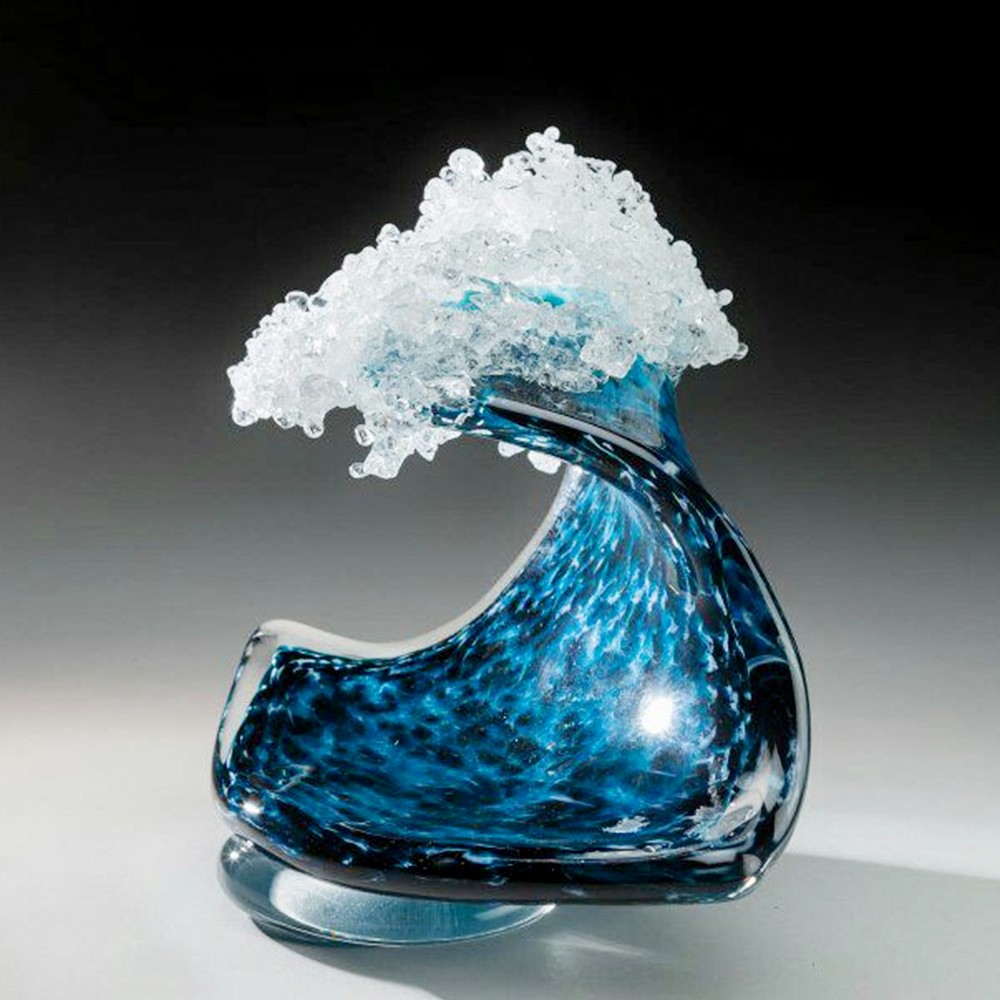
Josh Fradis Wave
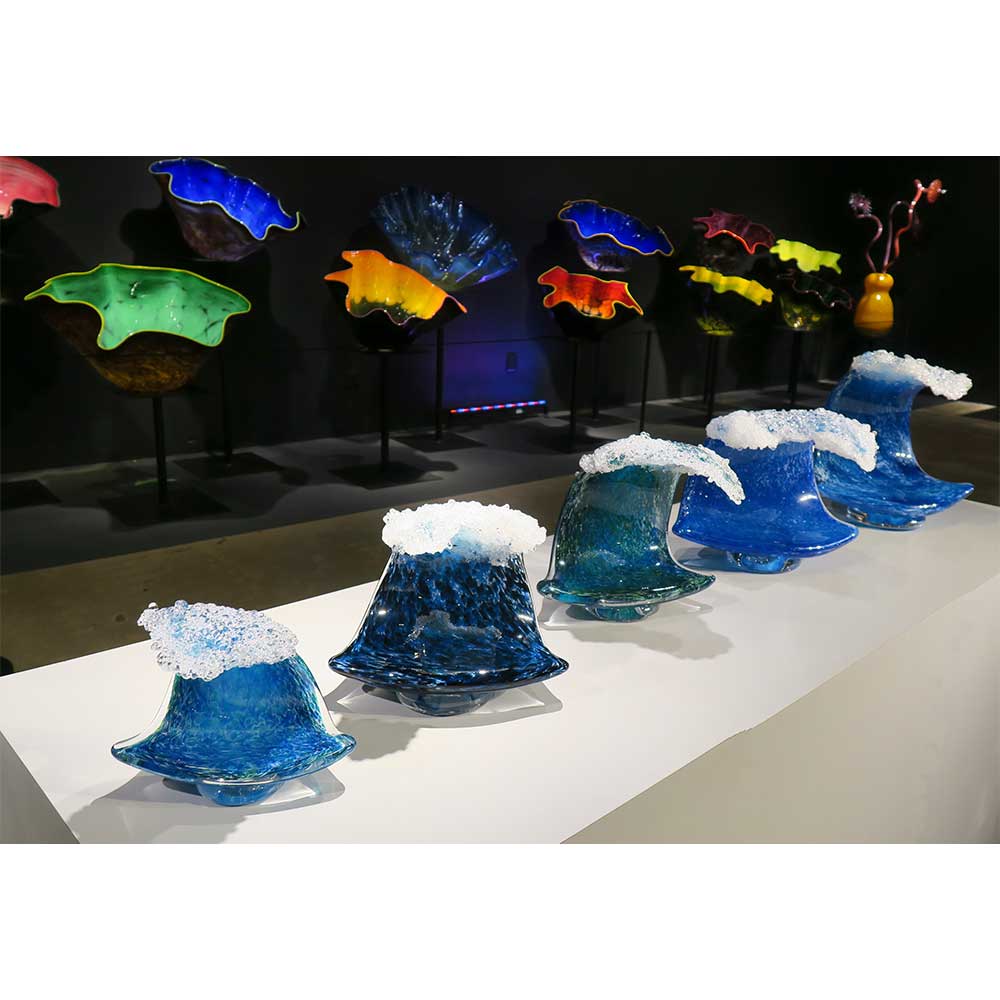
Josh Fradis Waves
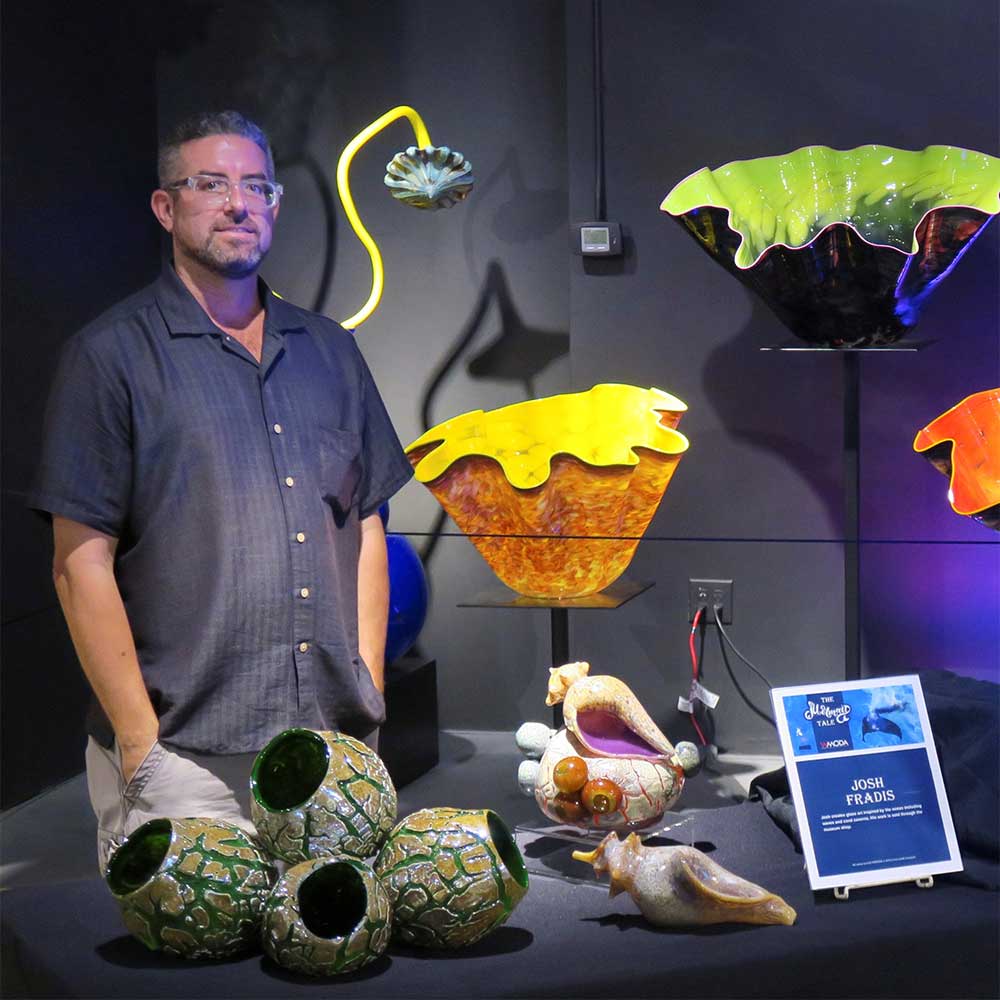
Josh Fradis @ WMODA
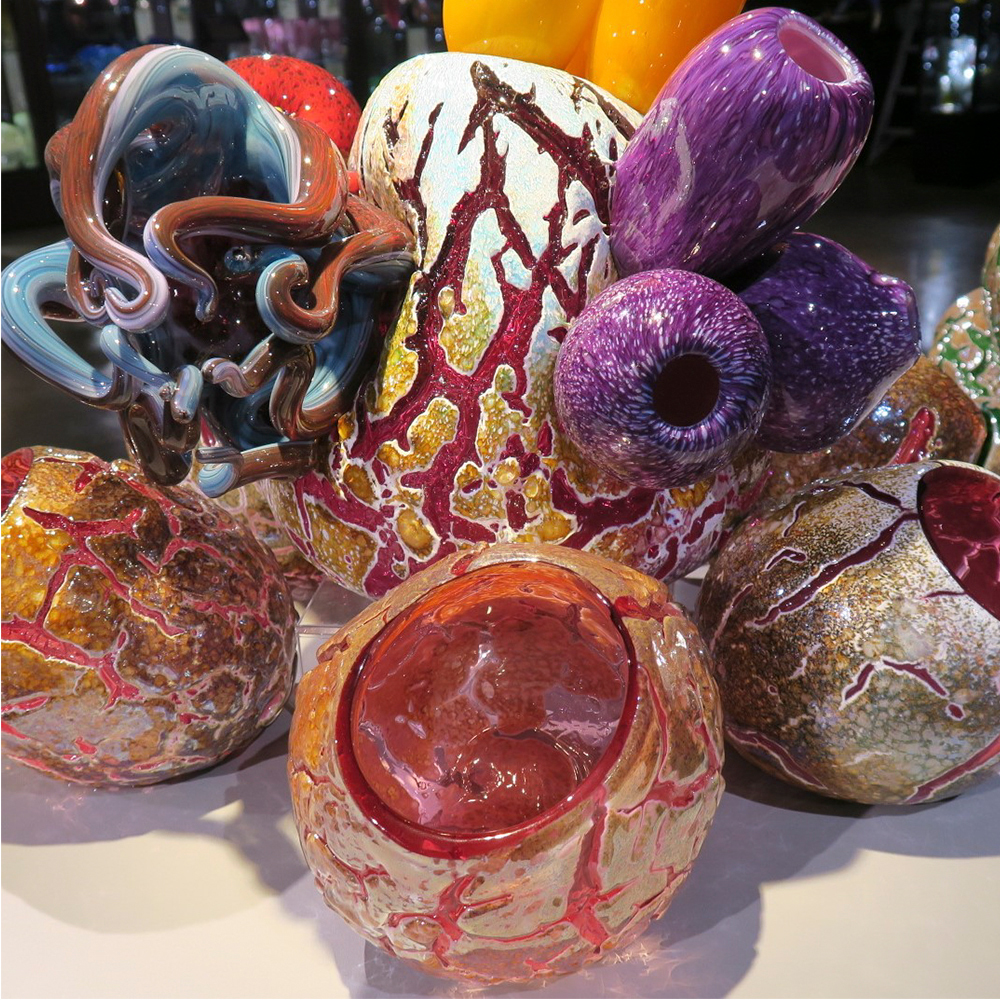
Josh Fradis Coral Caverns
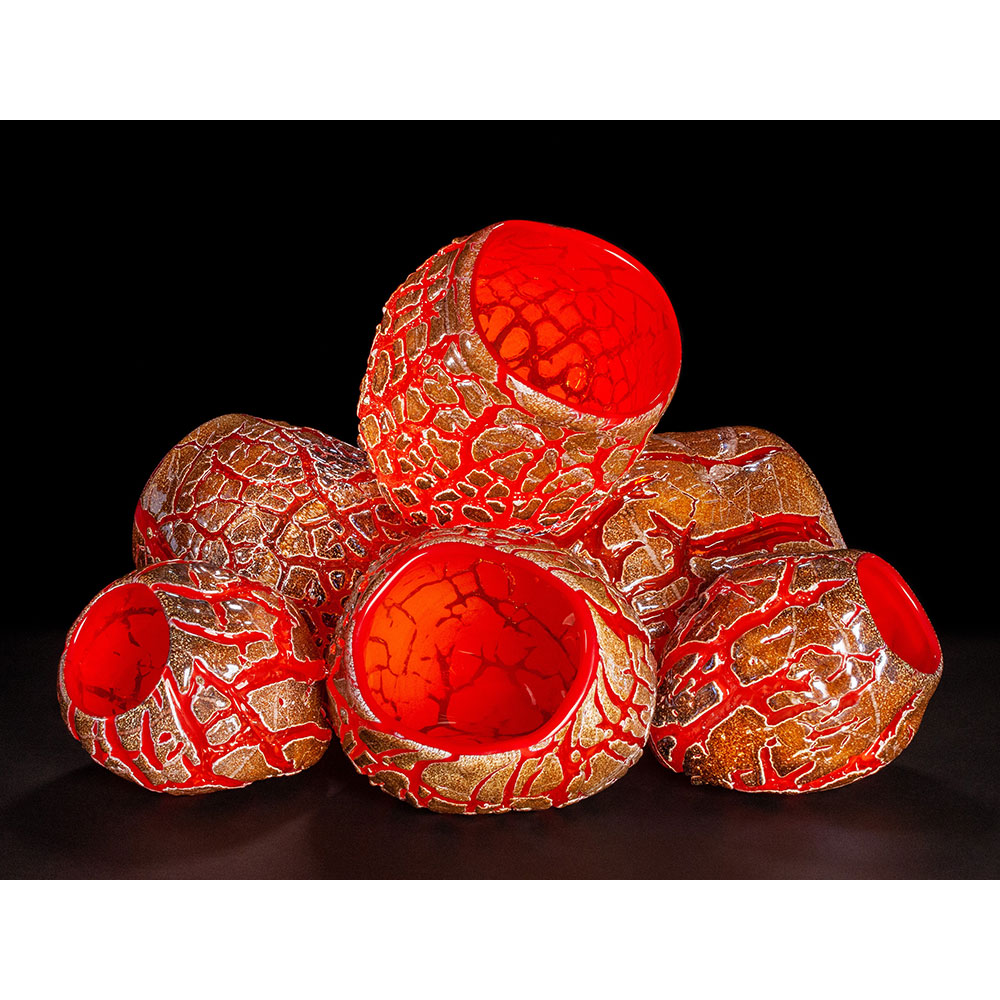
Josh Fradis Coral Caverns
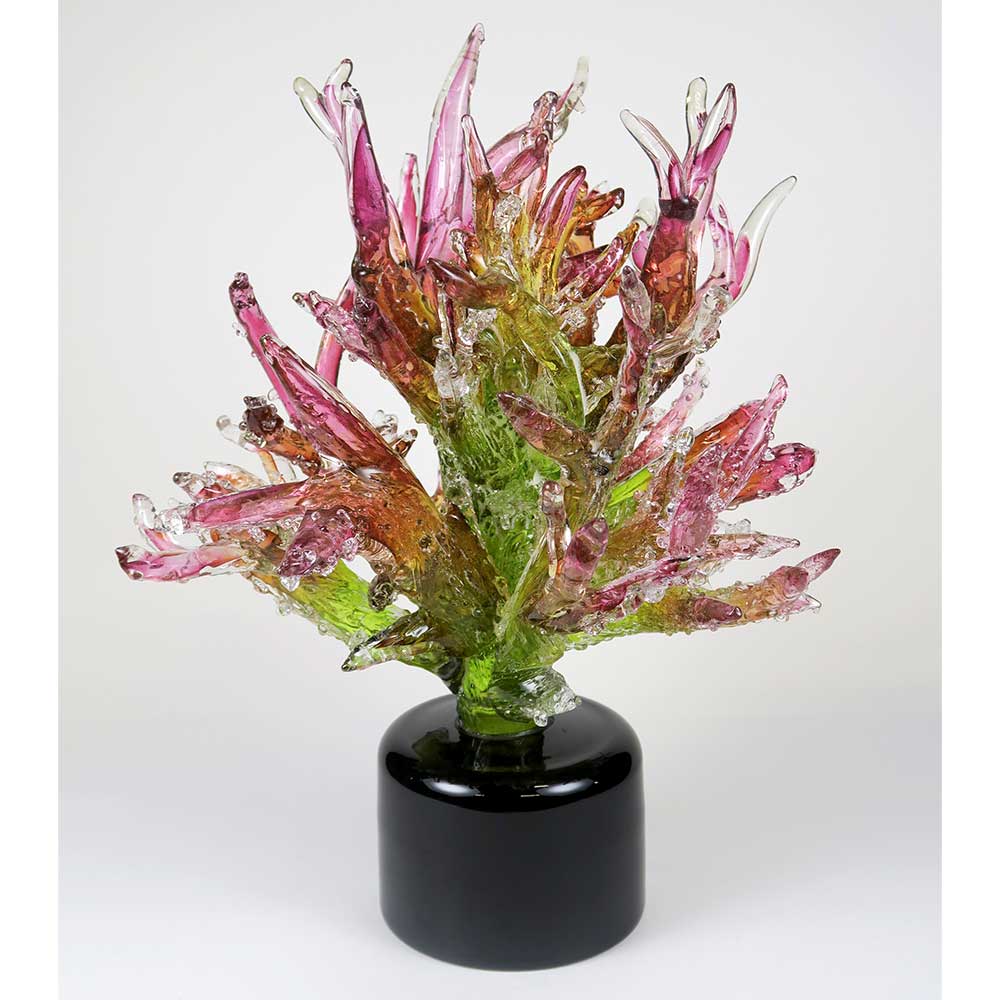
Rob Stern Coral
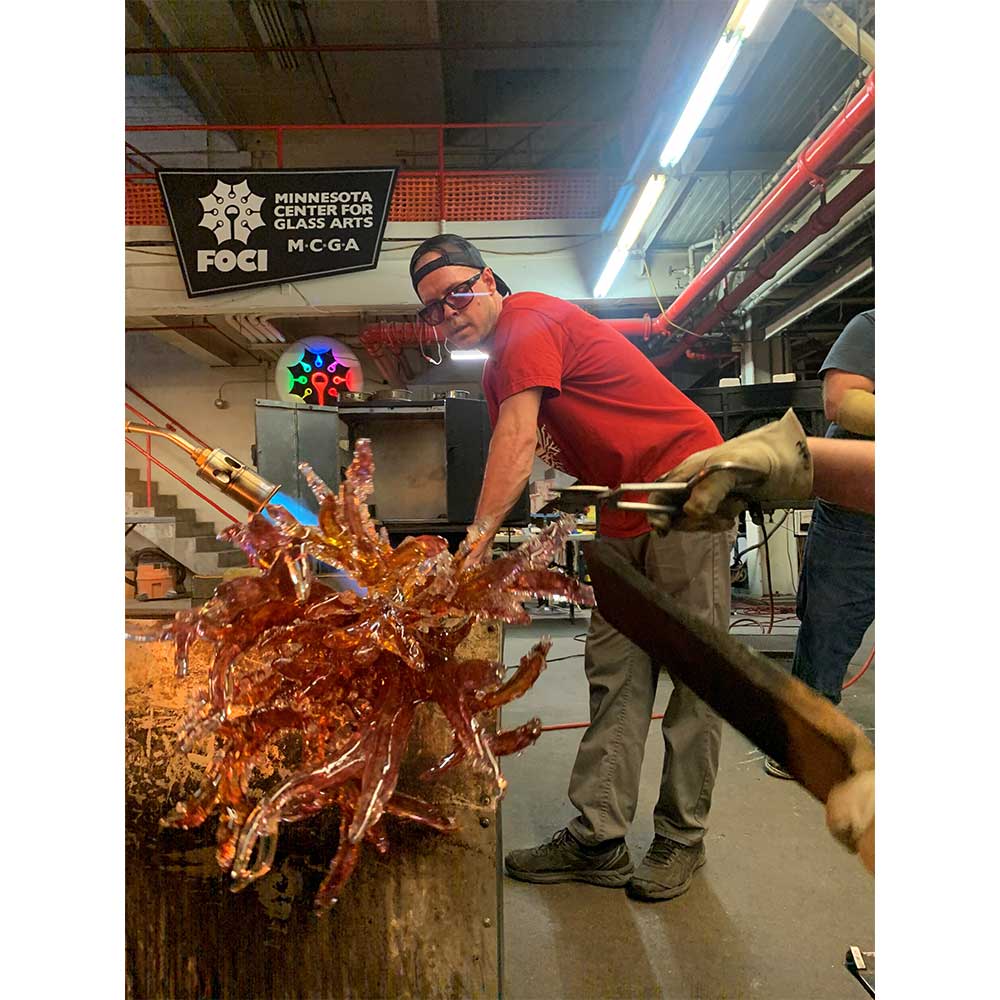
Rob Stern making coral
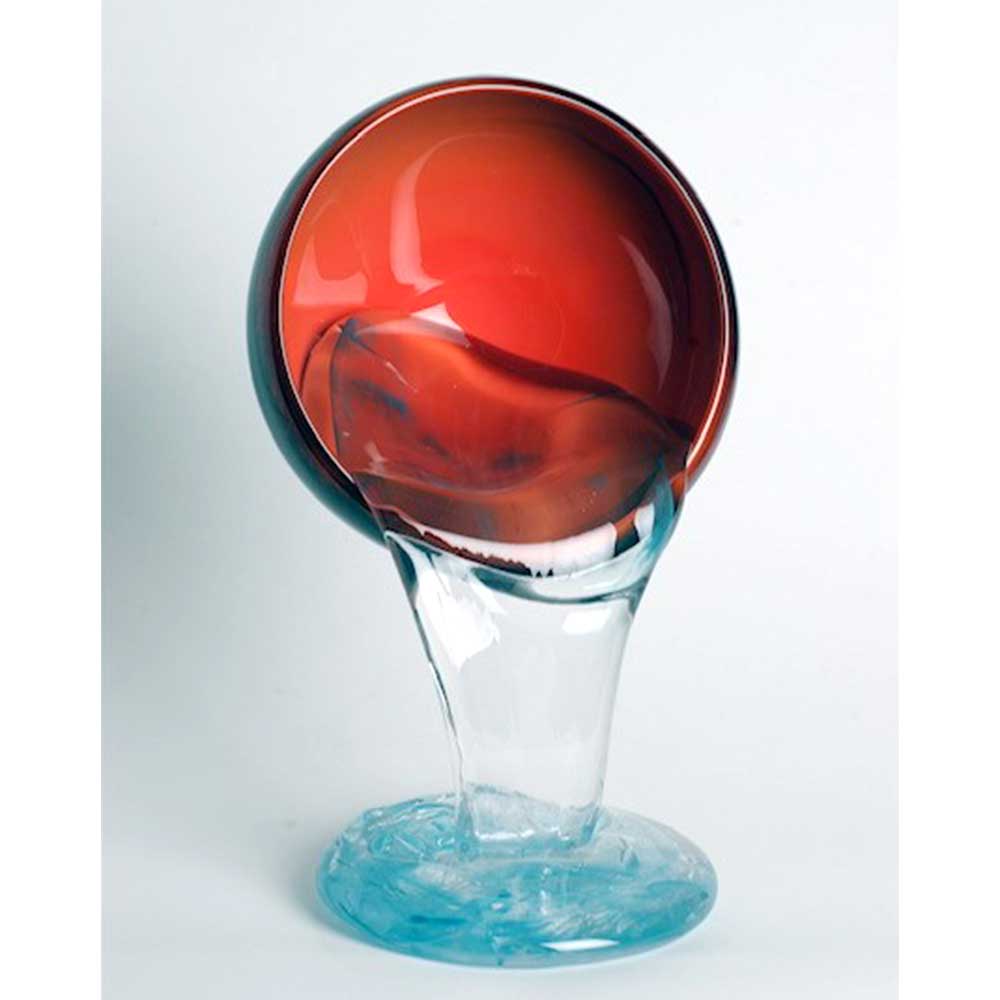
Rob Stern Pouring Bowl
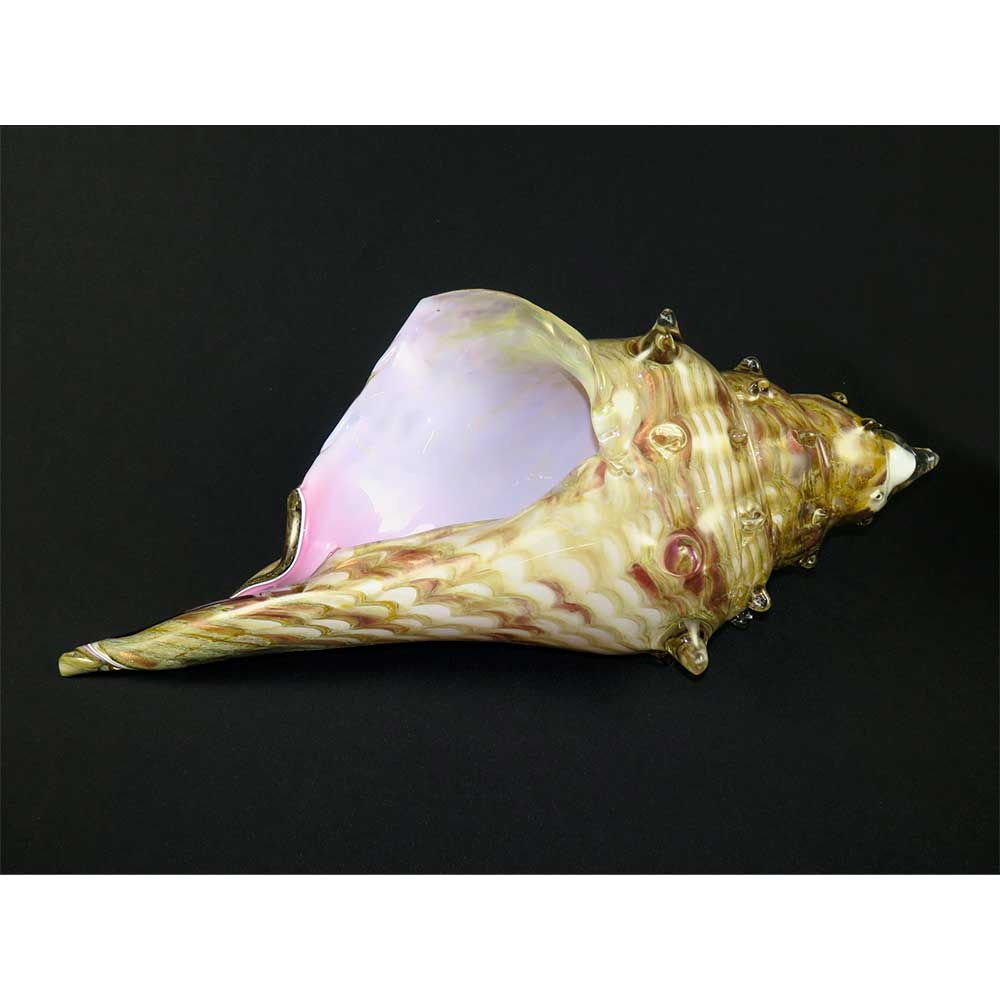
Rob Stern Conch
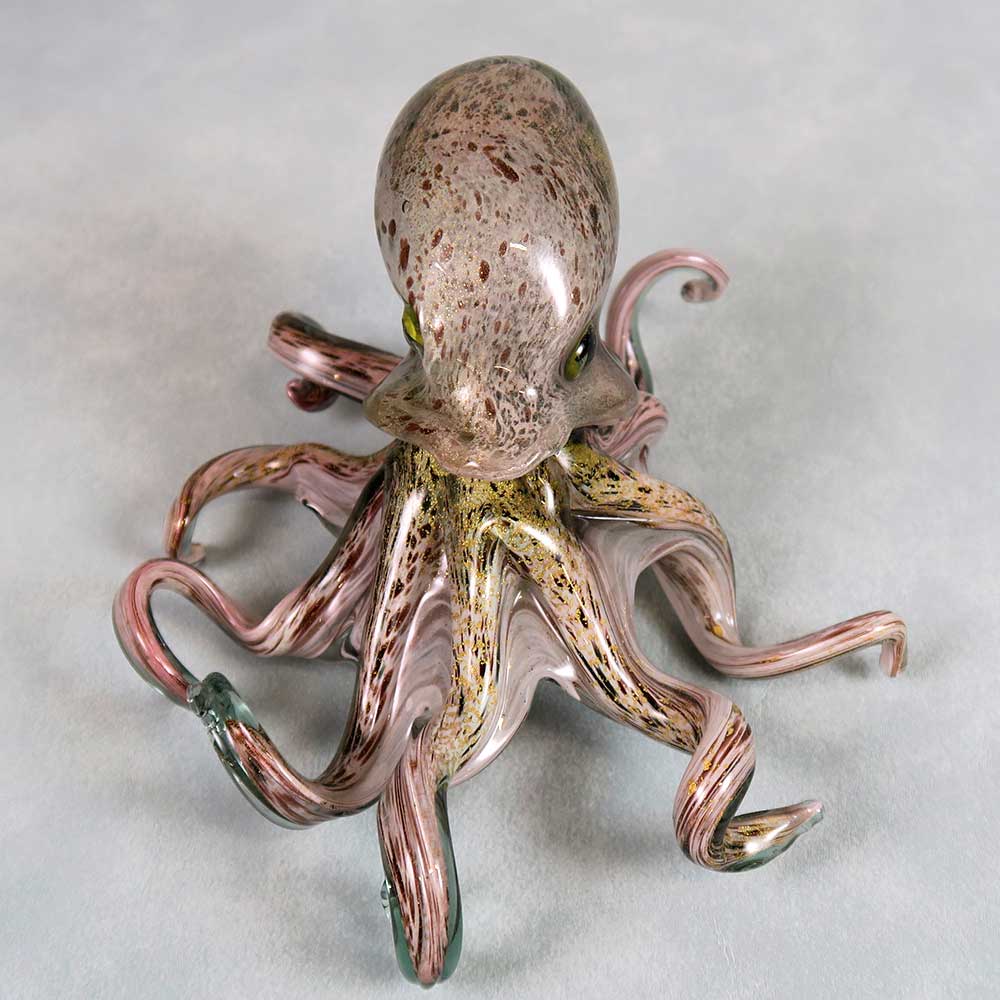
Dario Frare Octopus
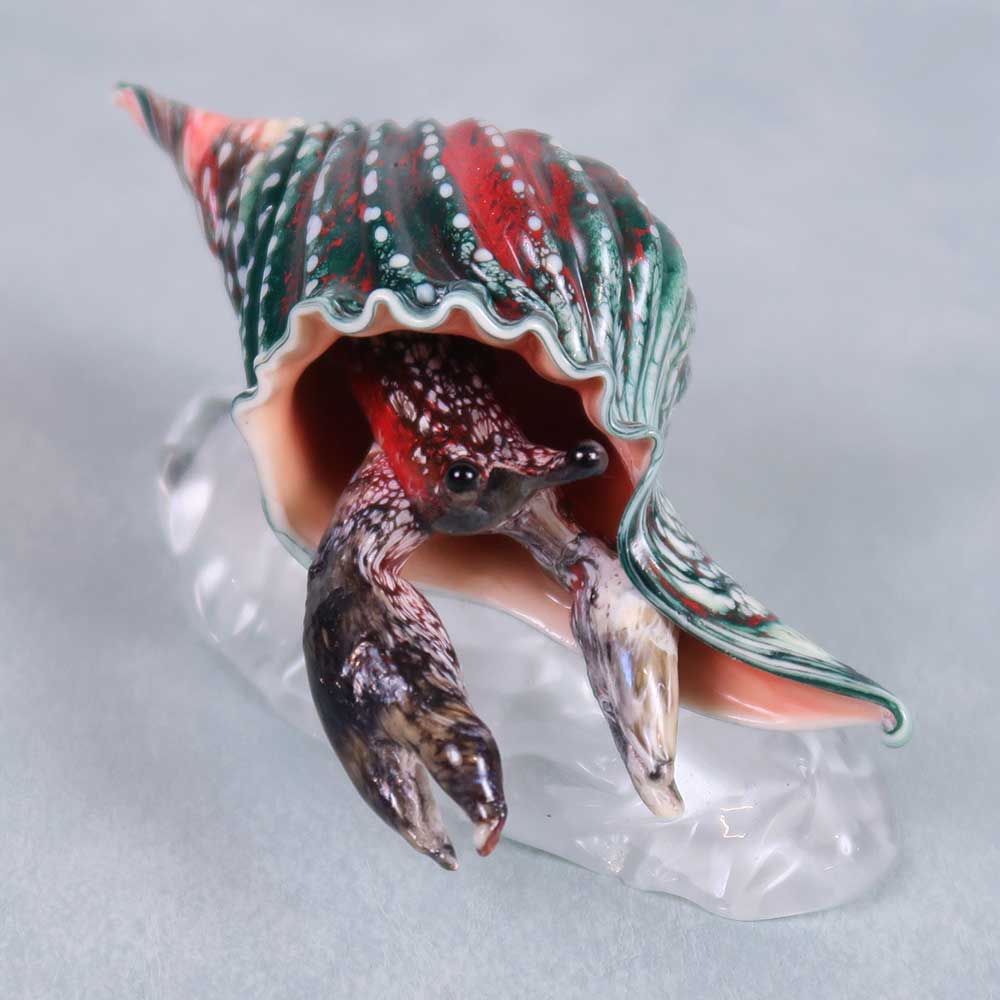
Dario Frare Hermit Crab
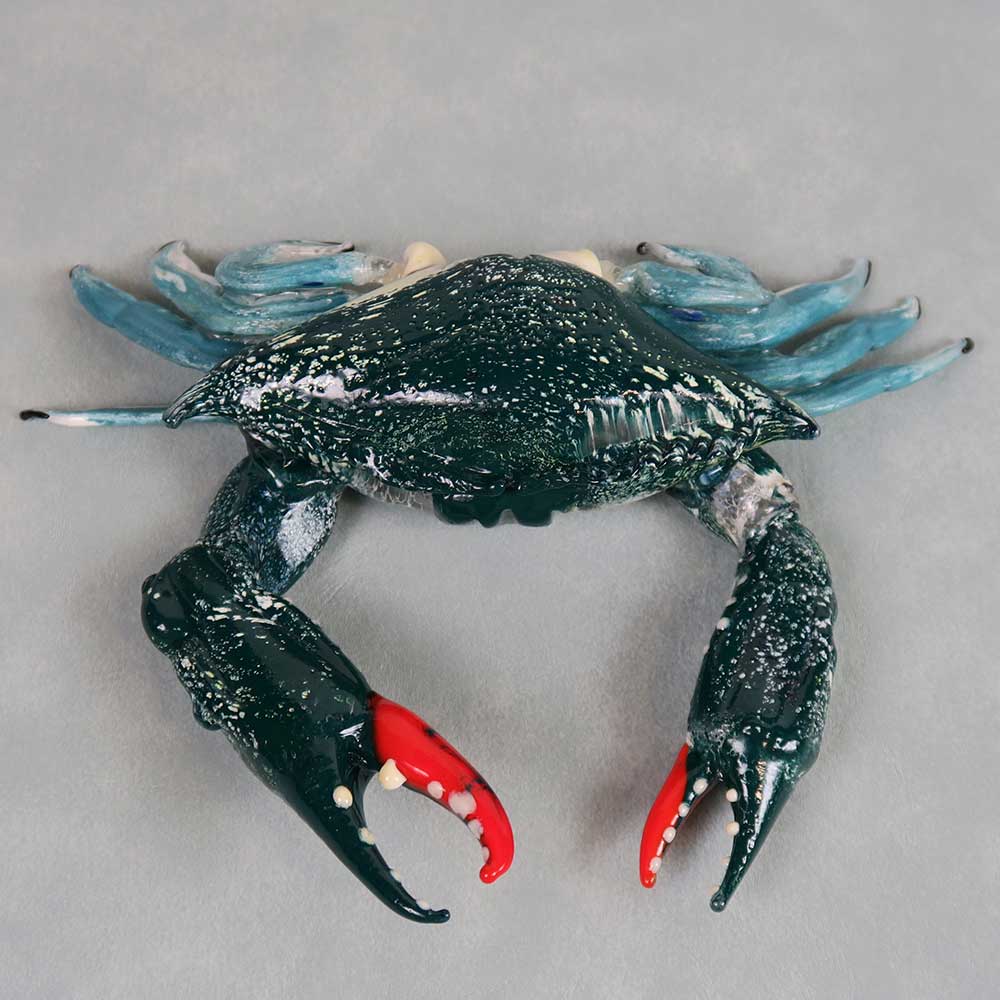
Dario Frare Crab
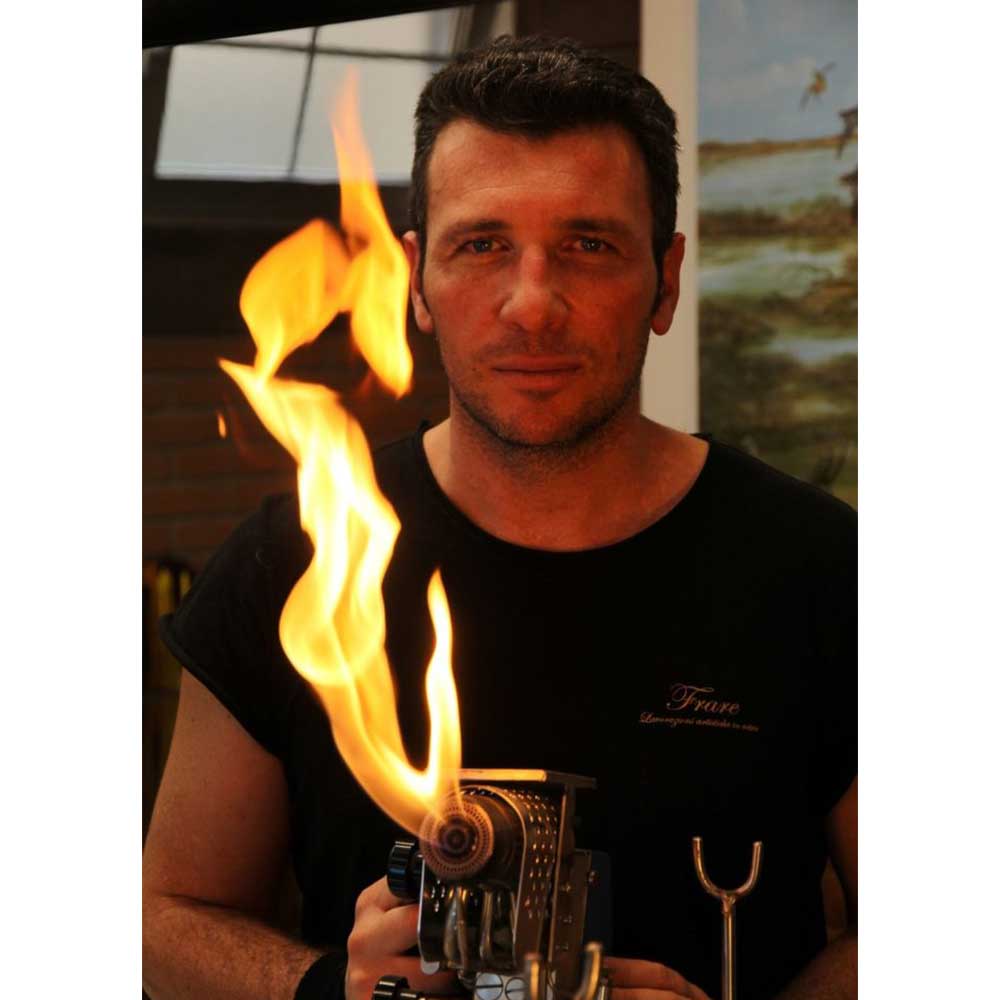
Dario Frare
“Glass itself is so much like water. If you let it go on its own, it almost ends up looking like something that came from the sea.” Chihuly
